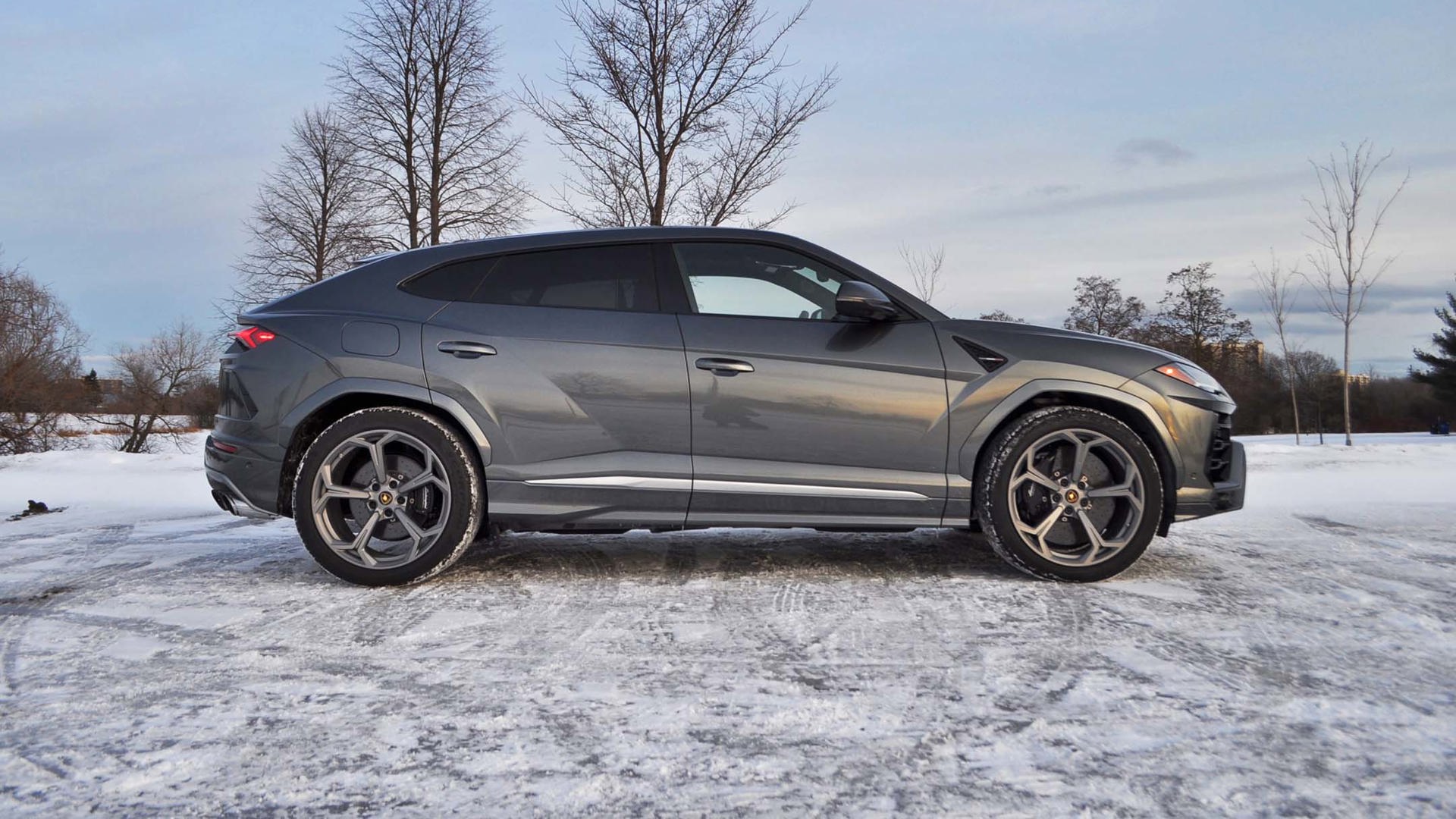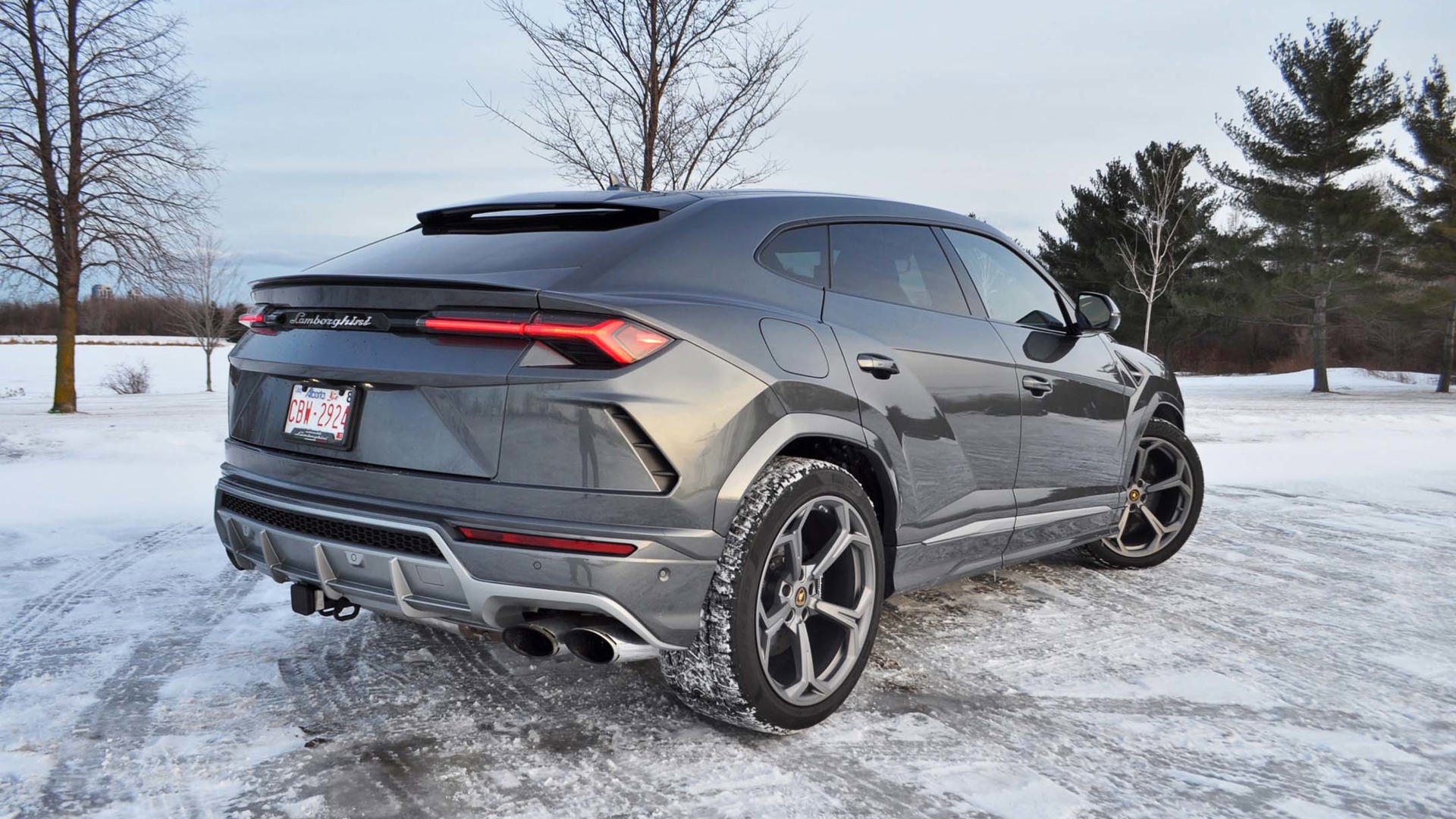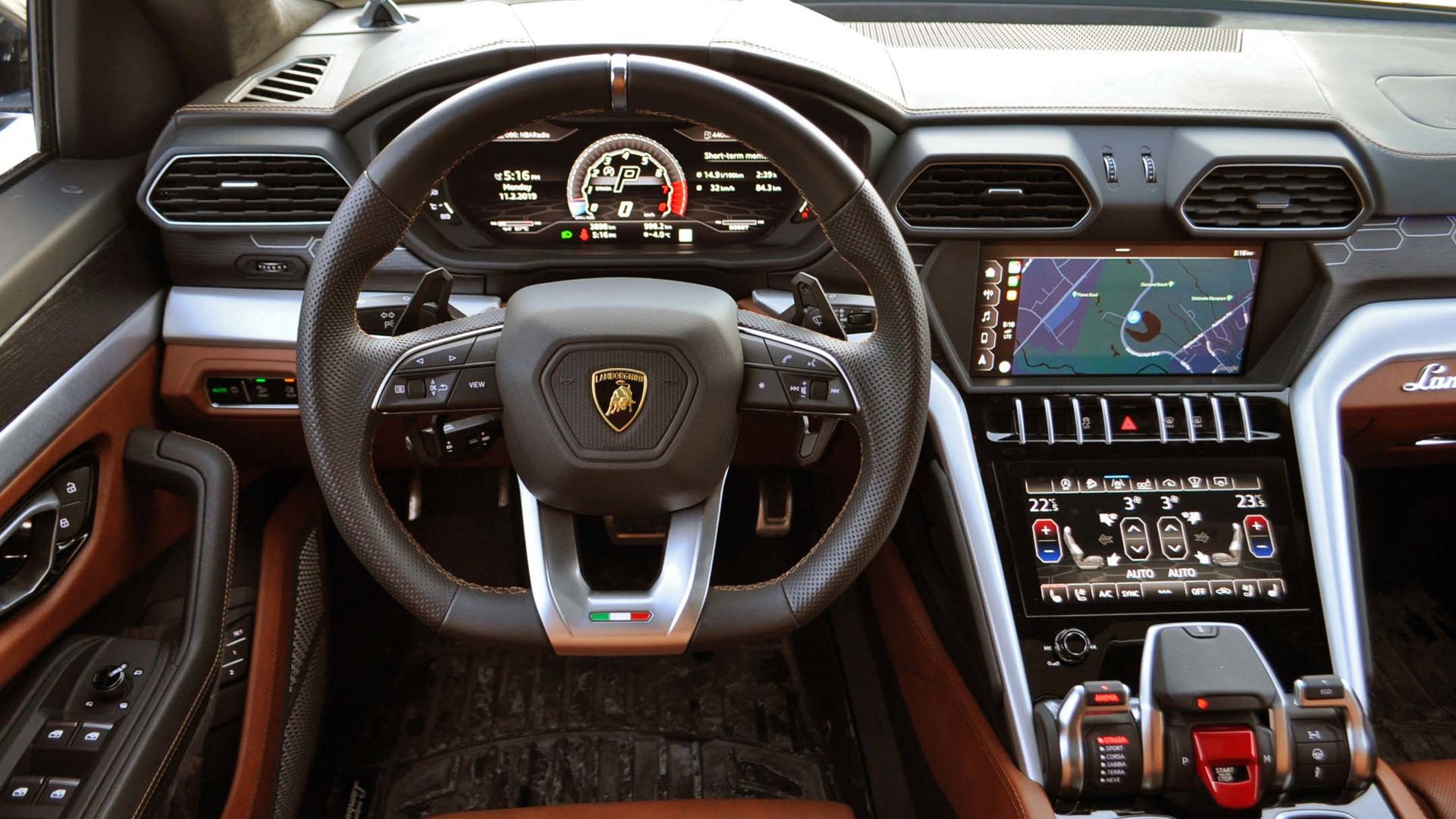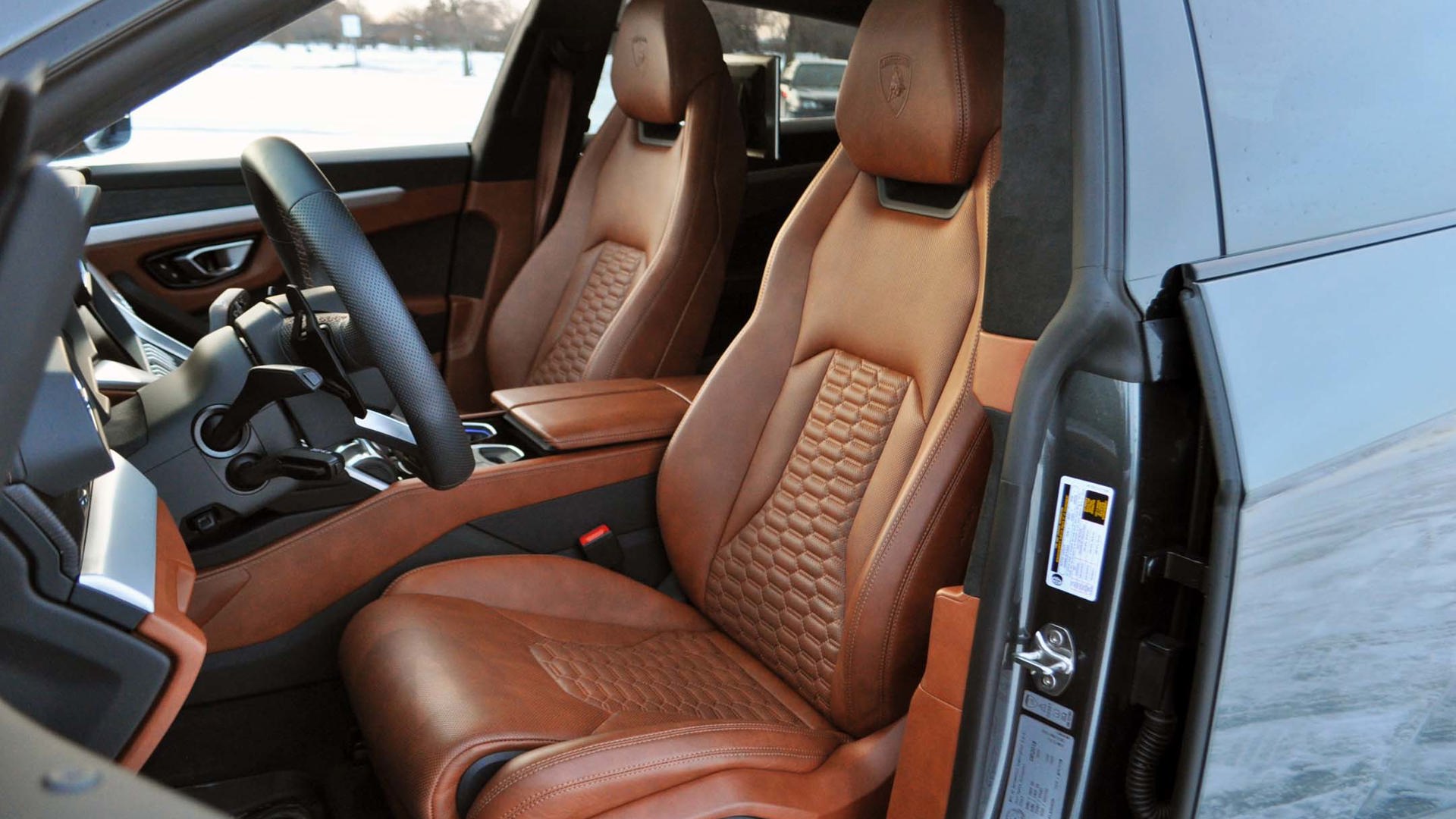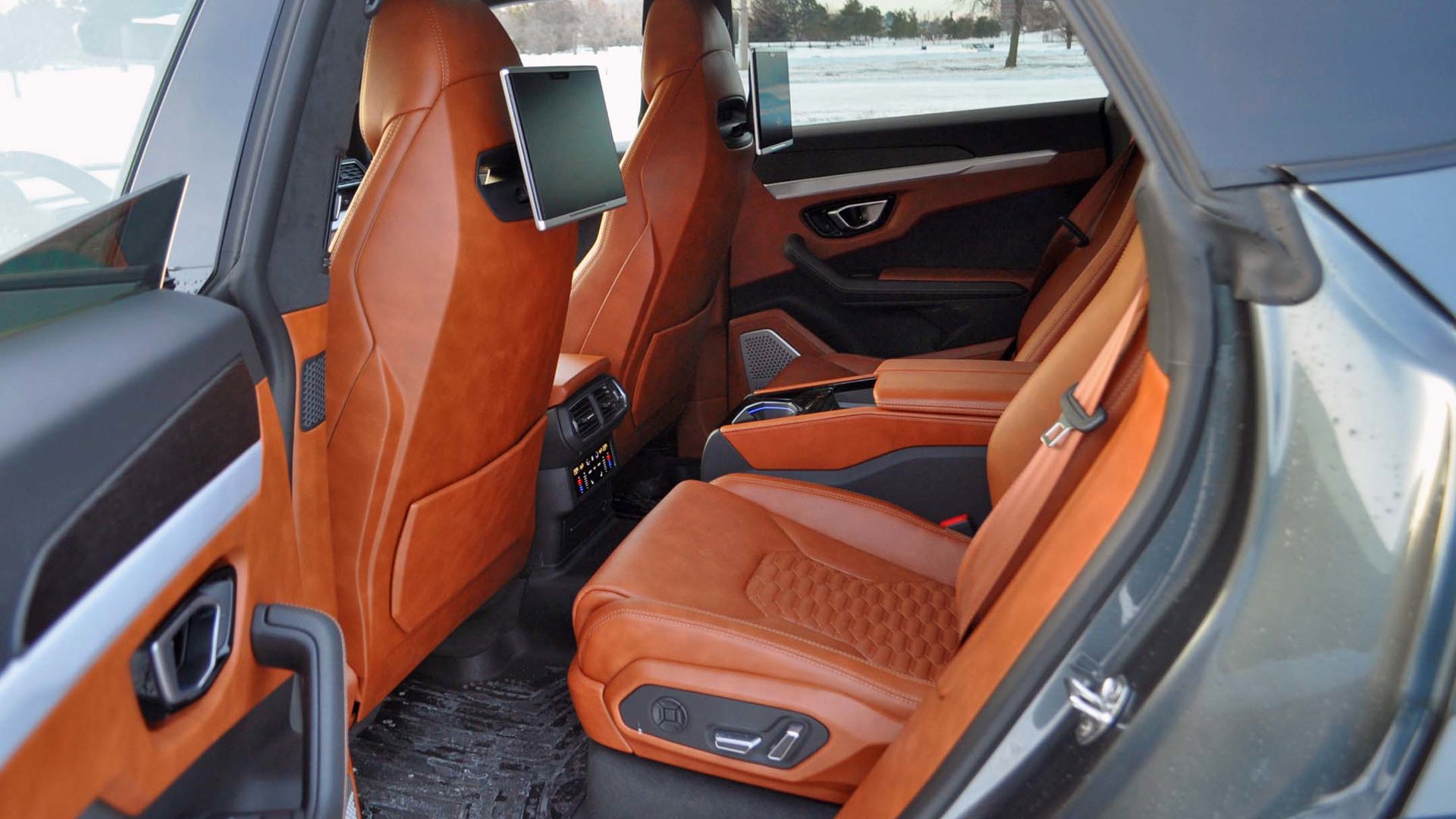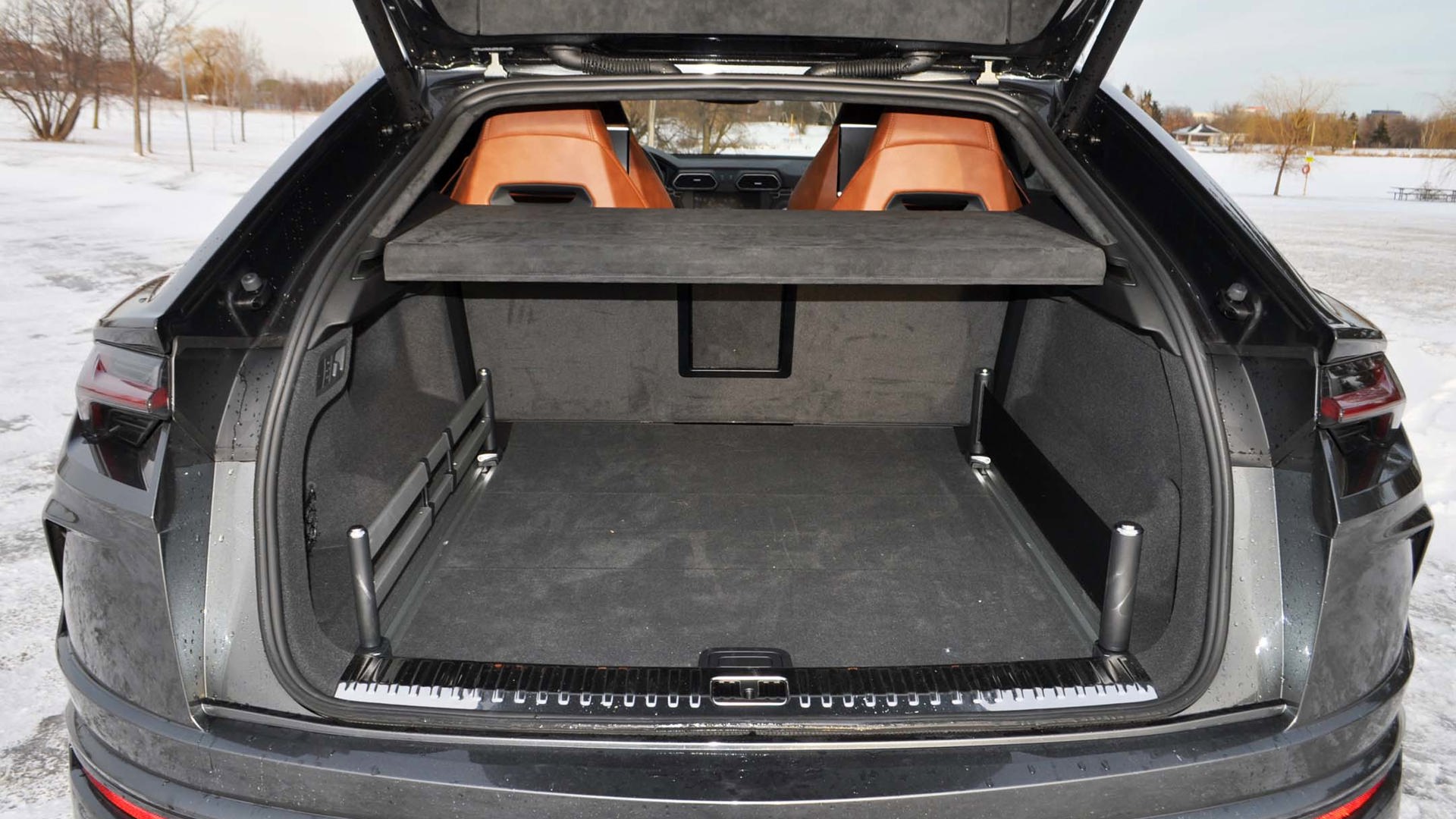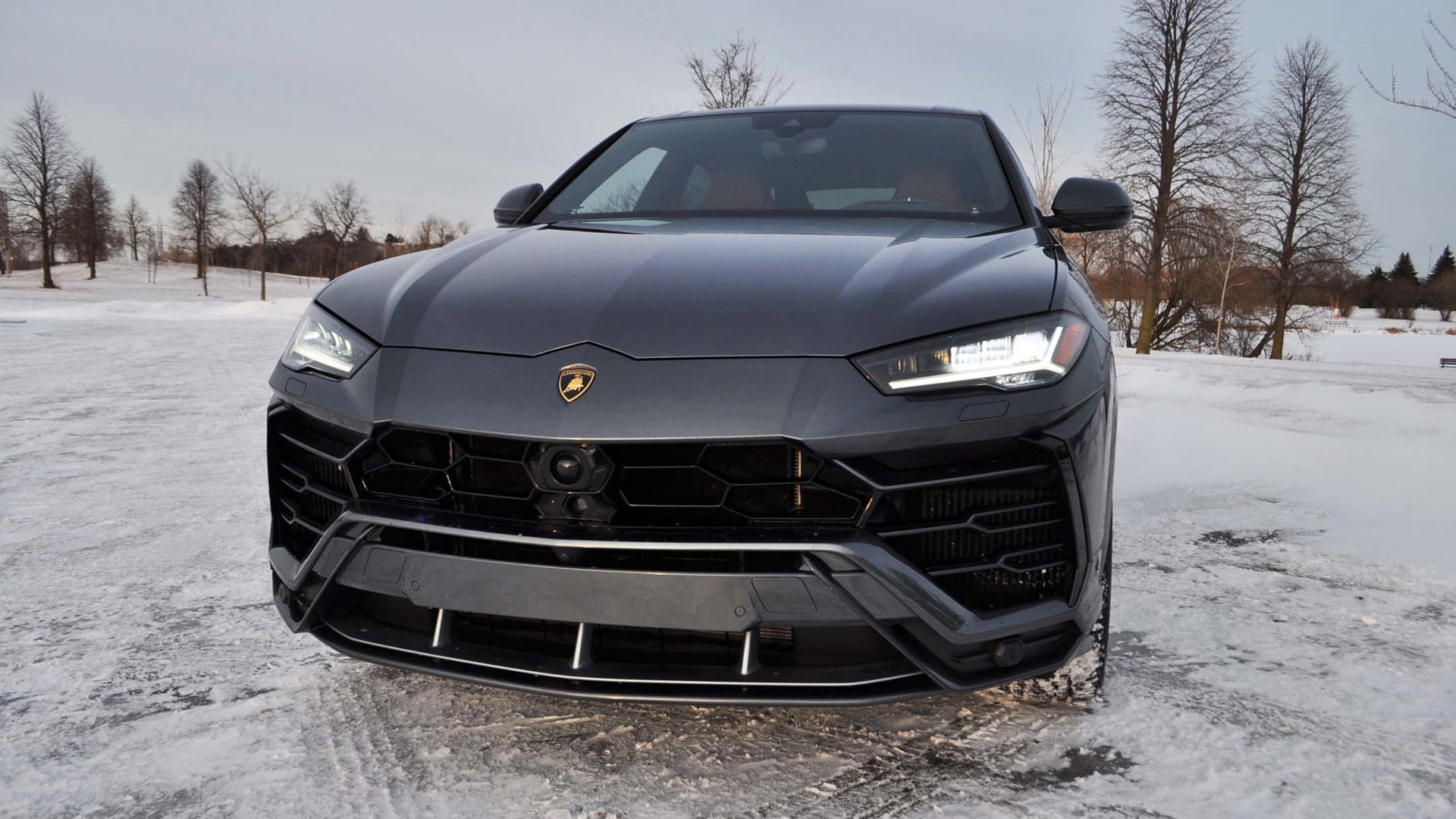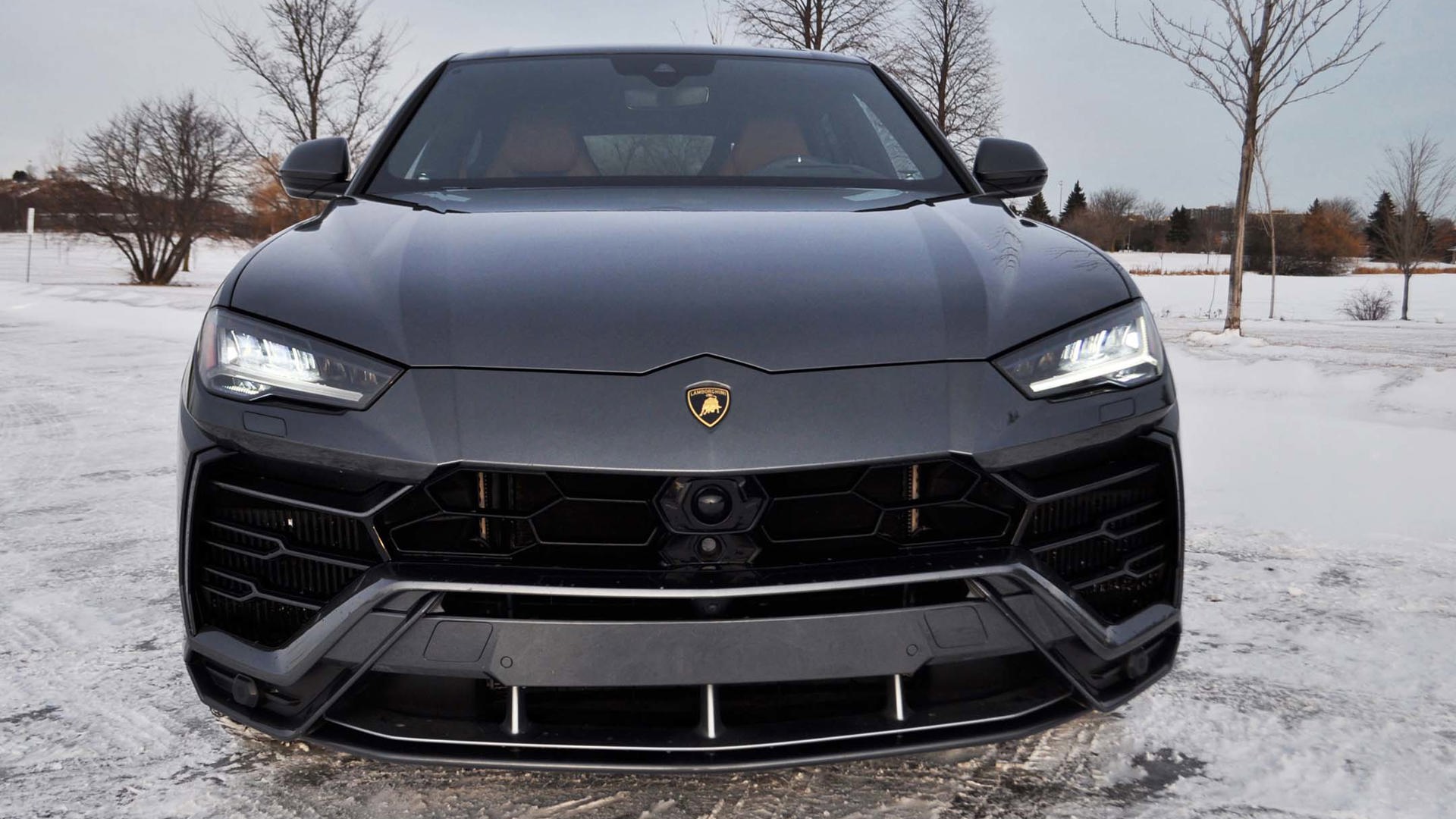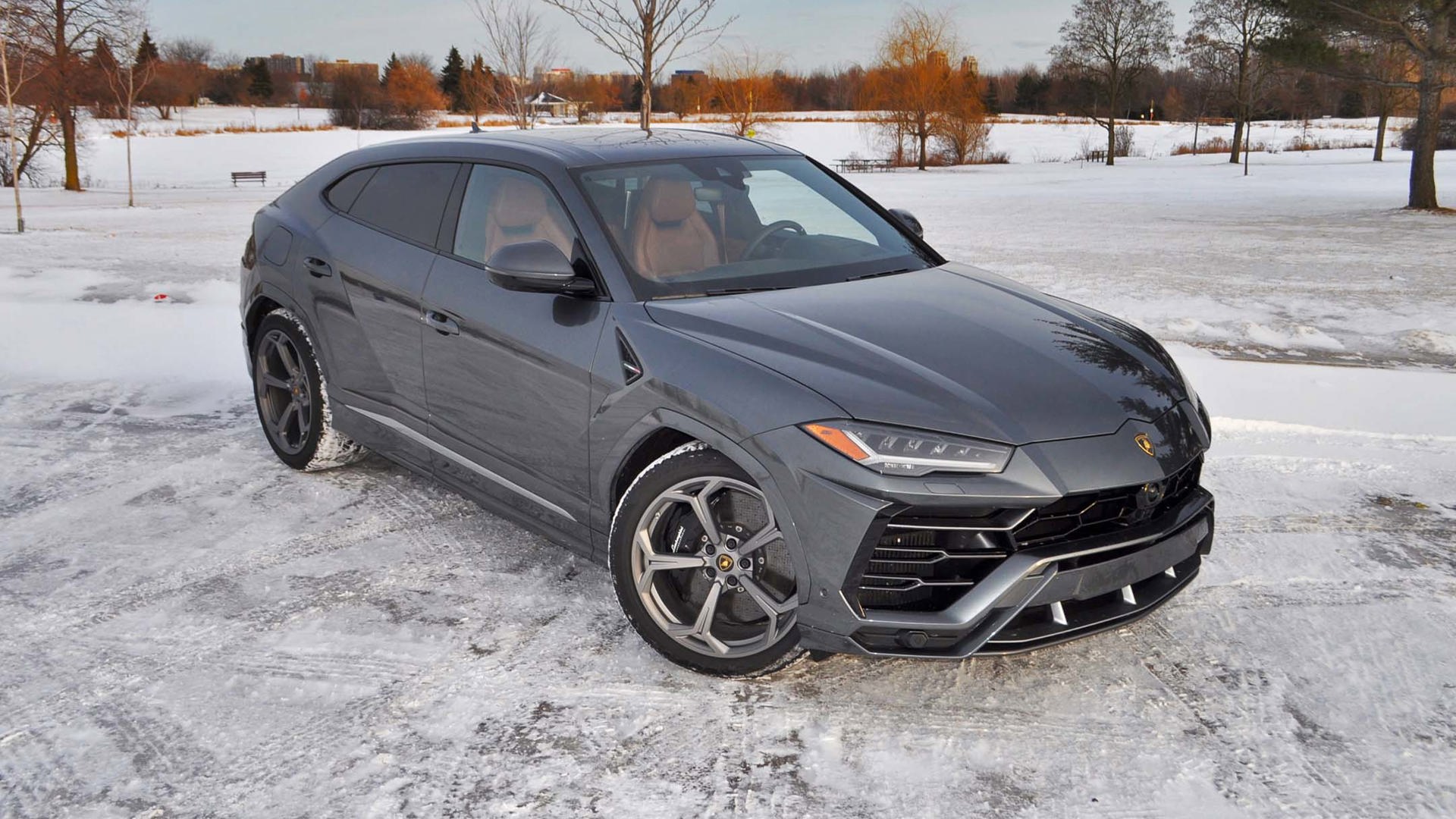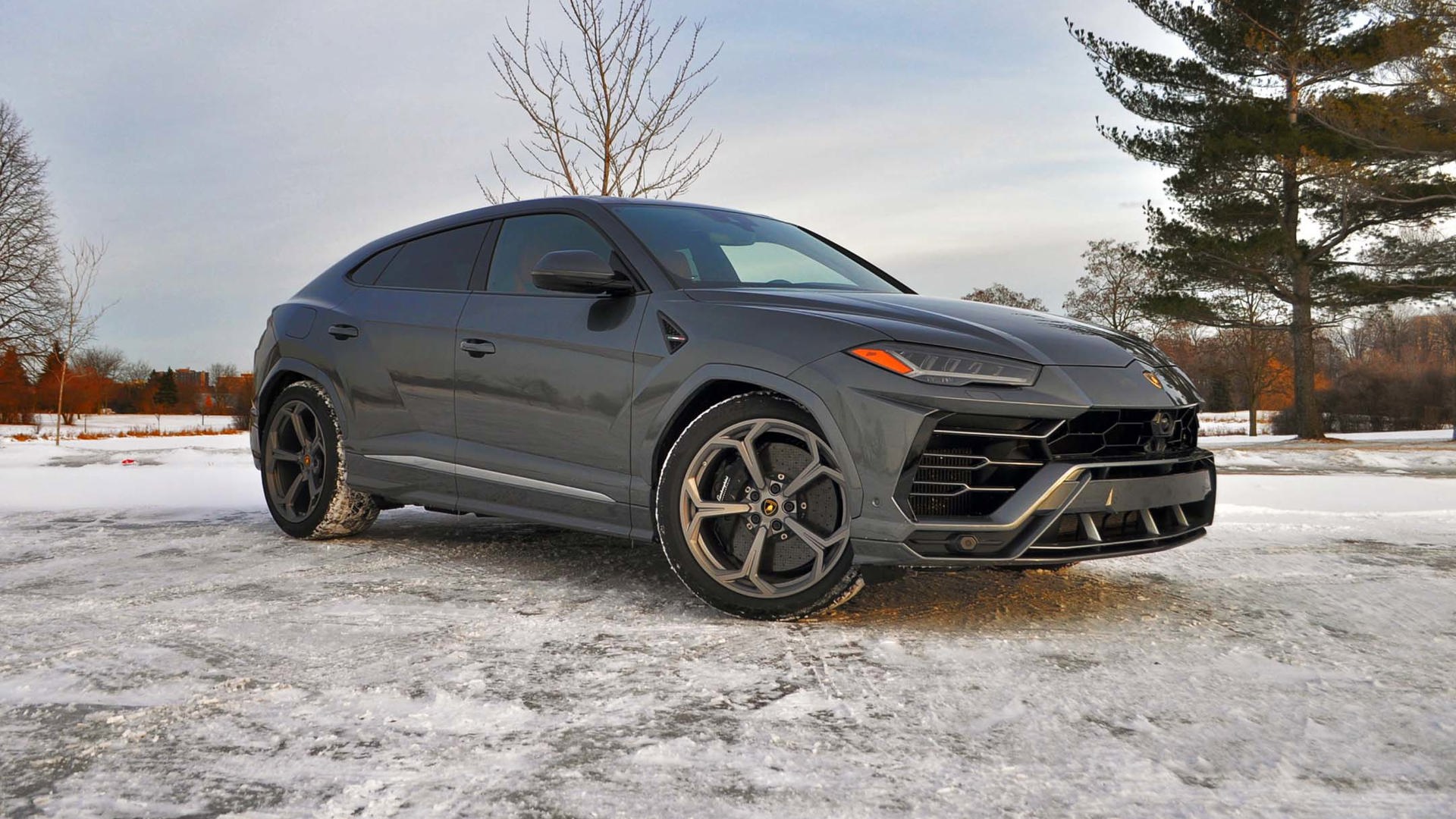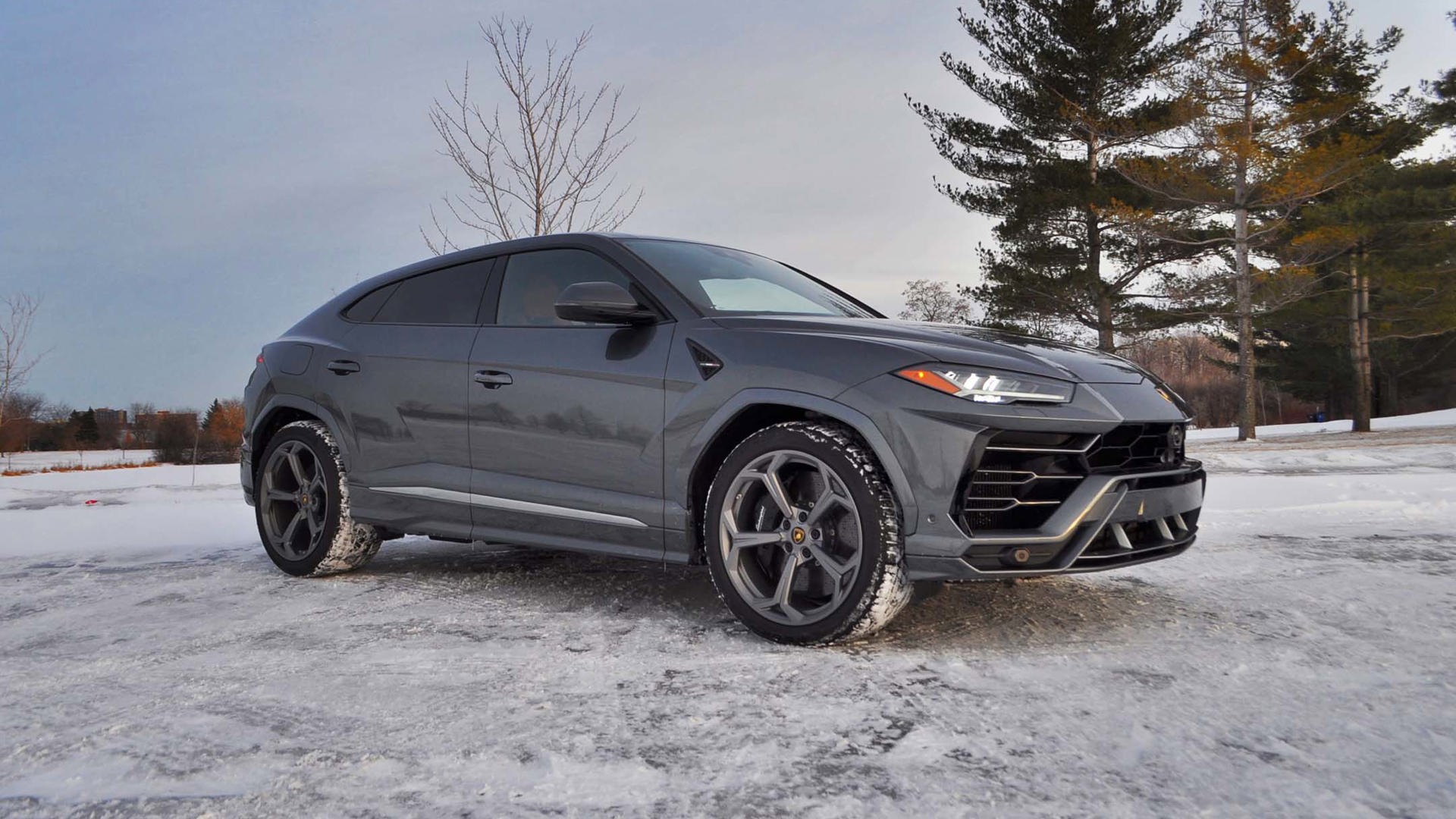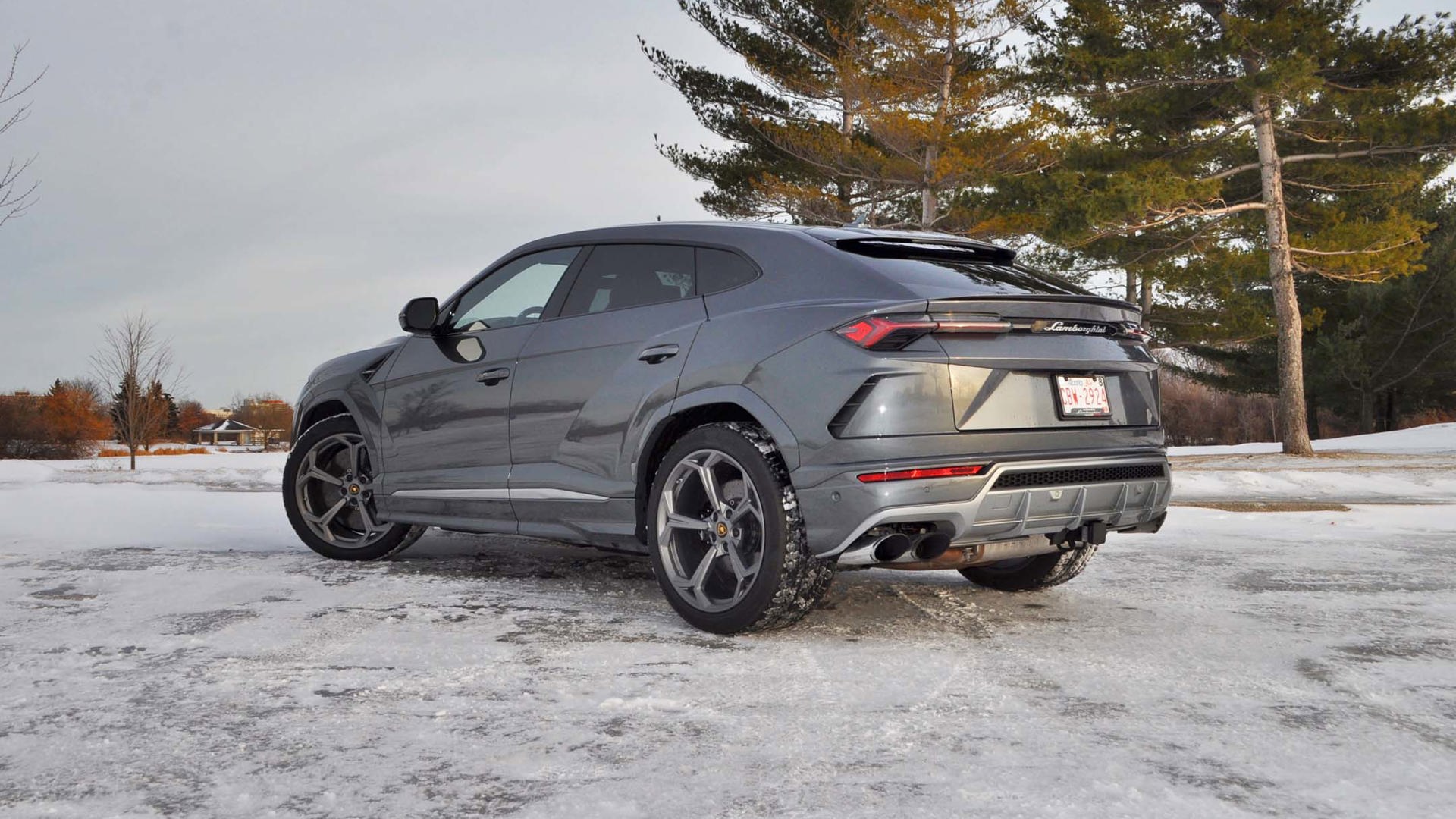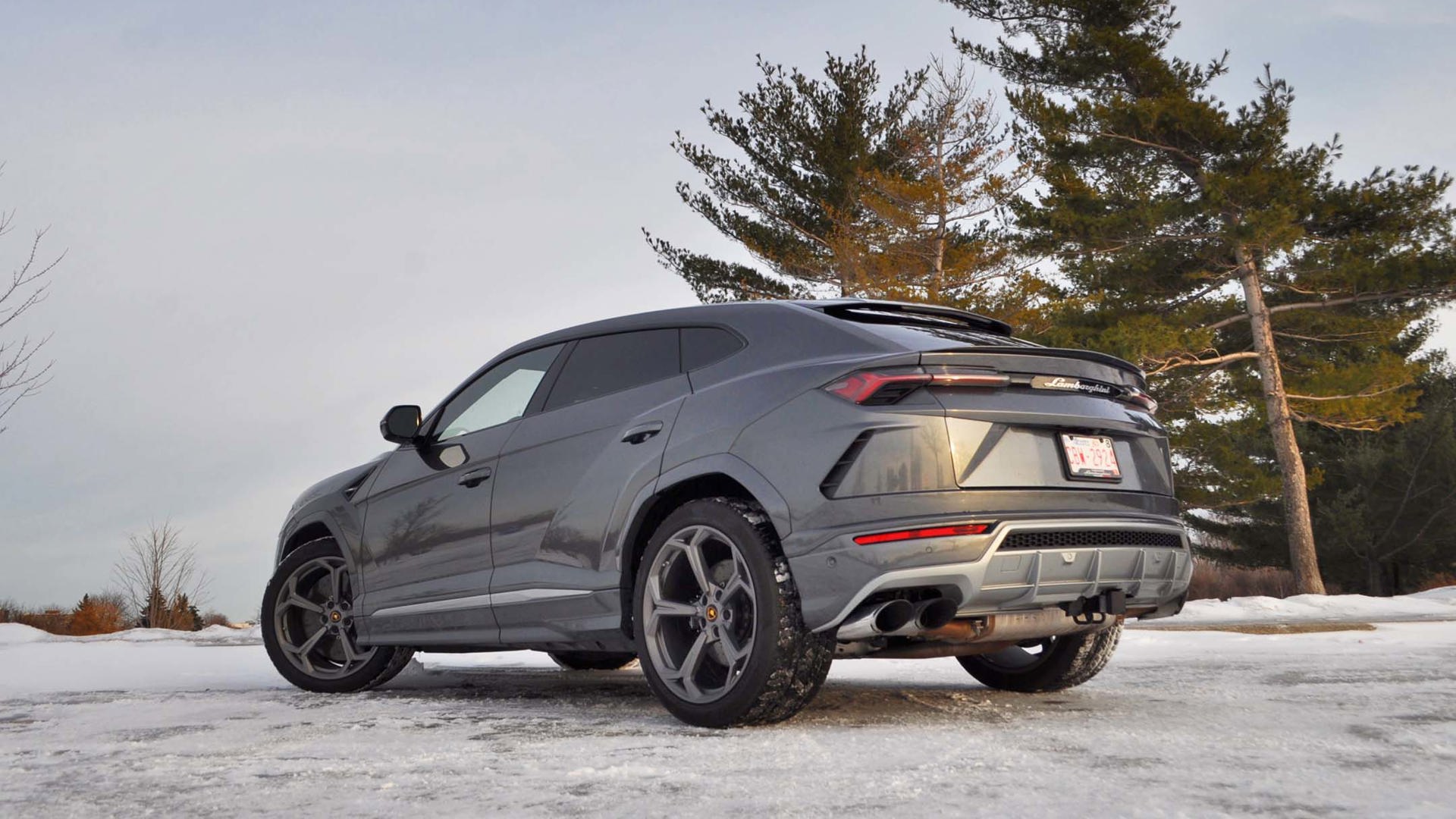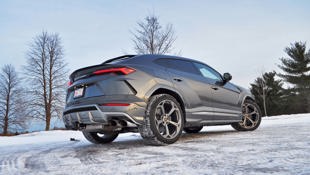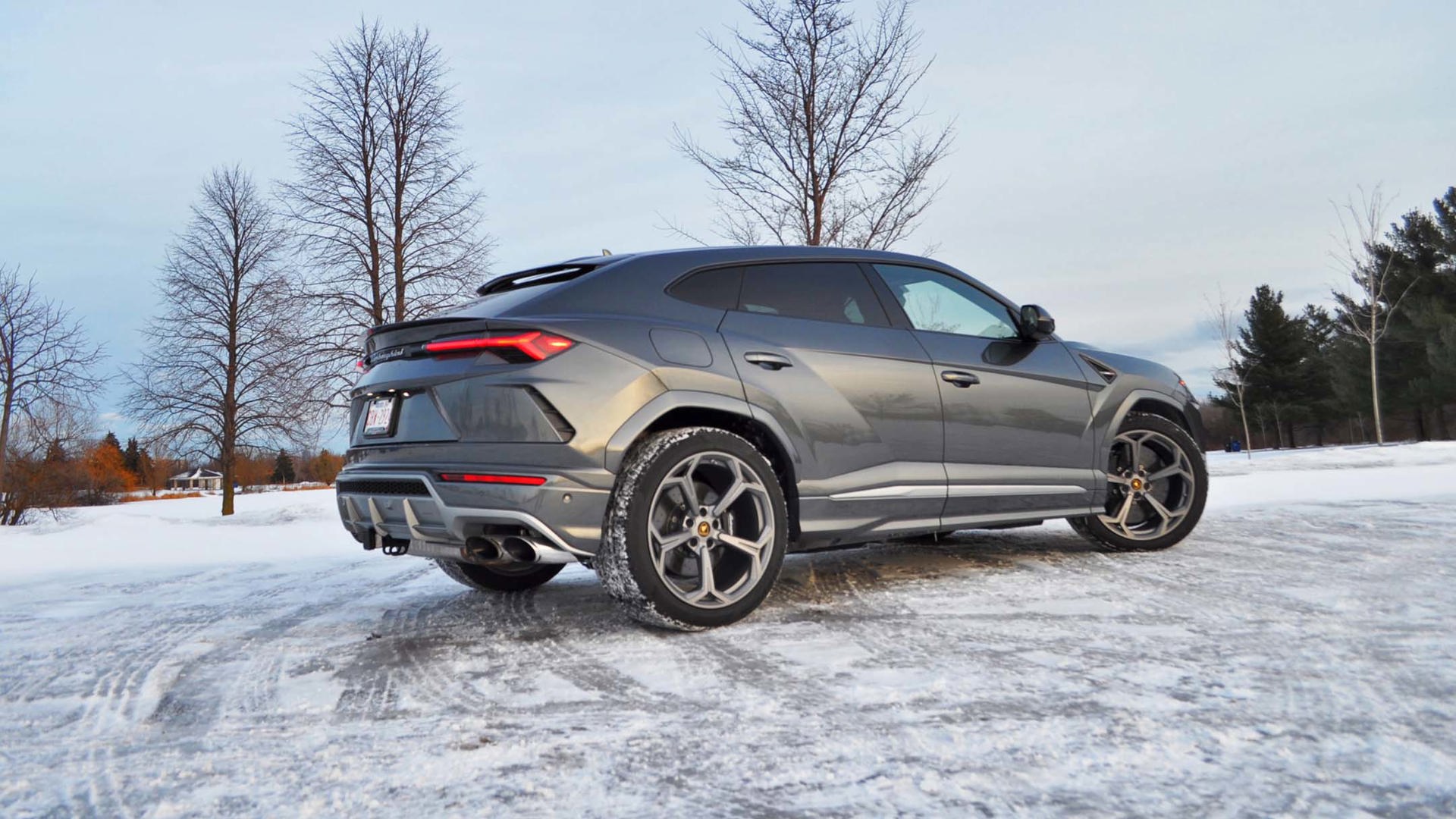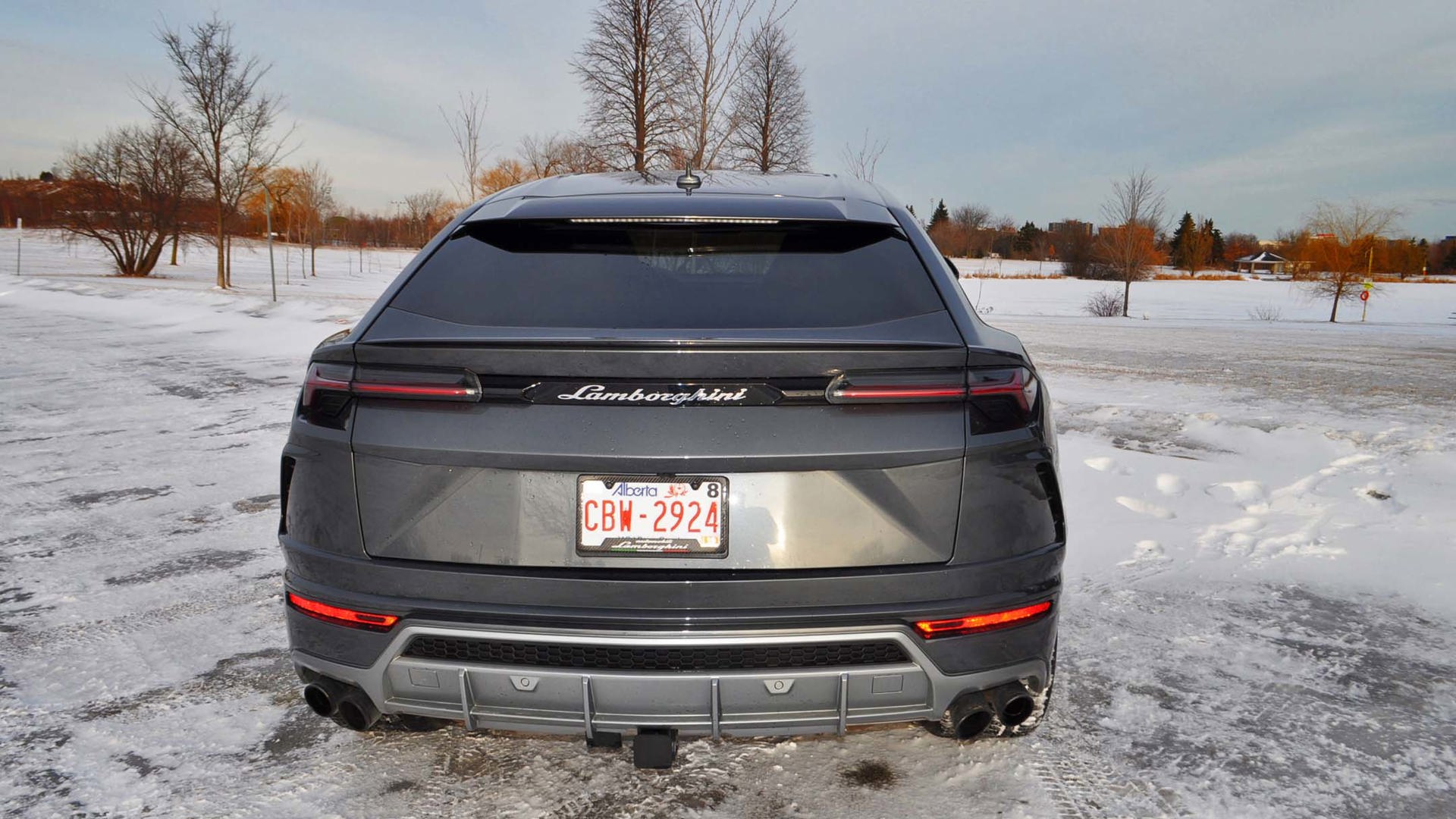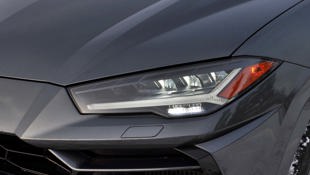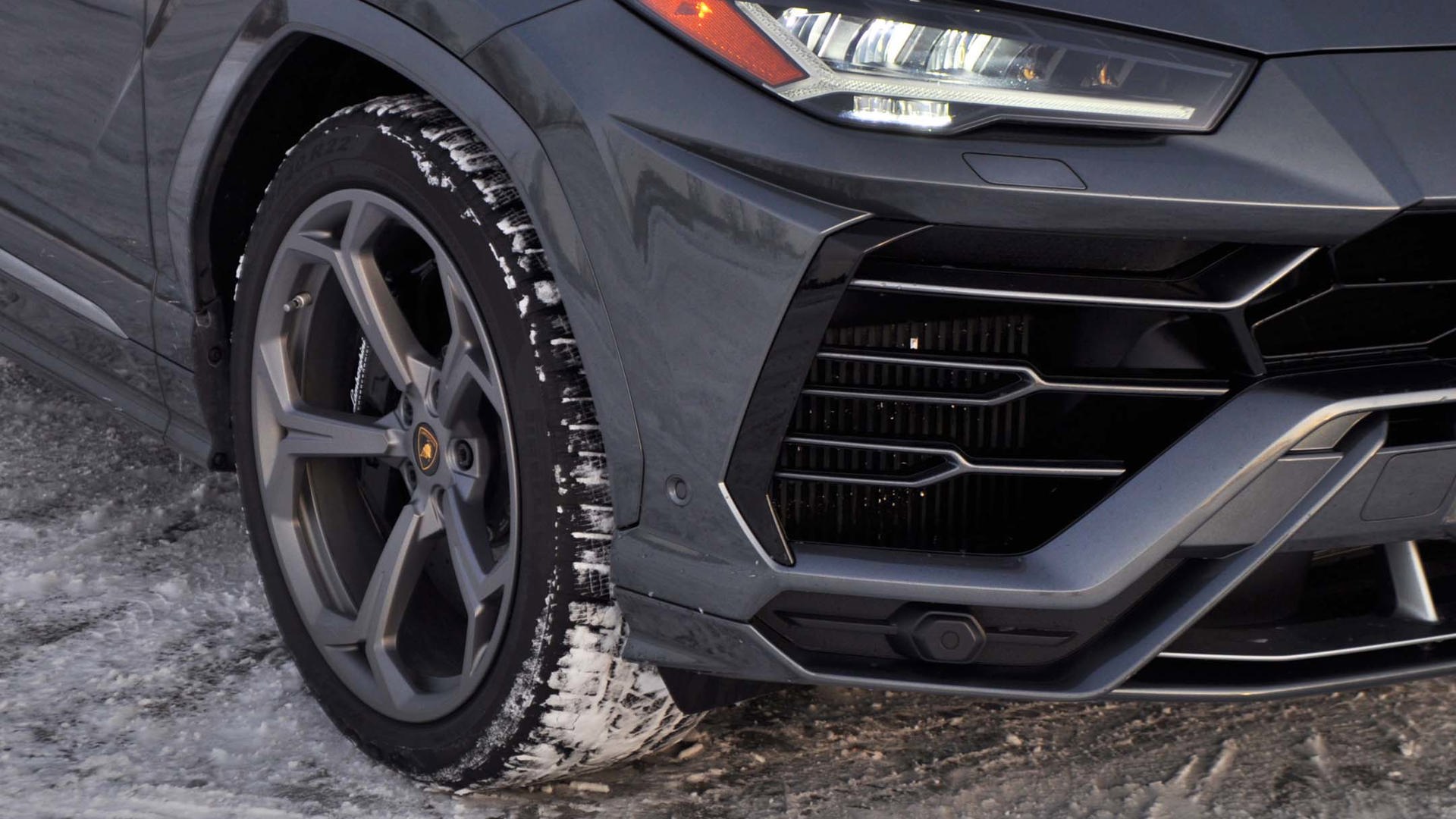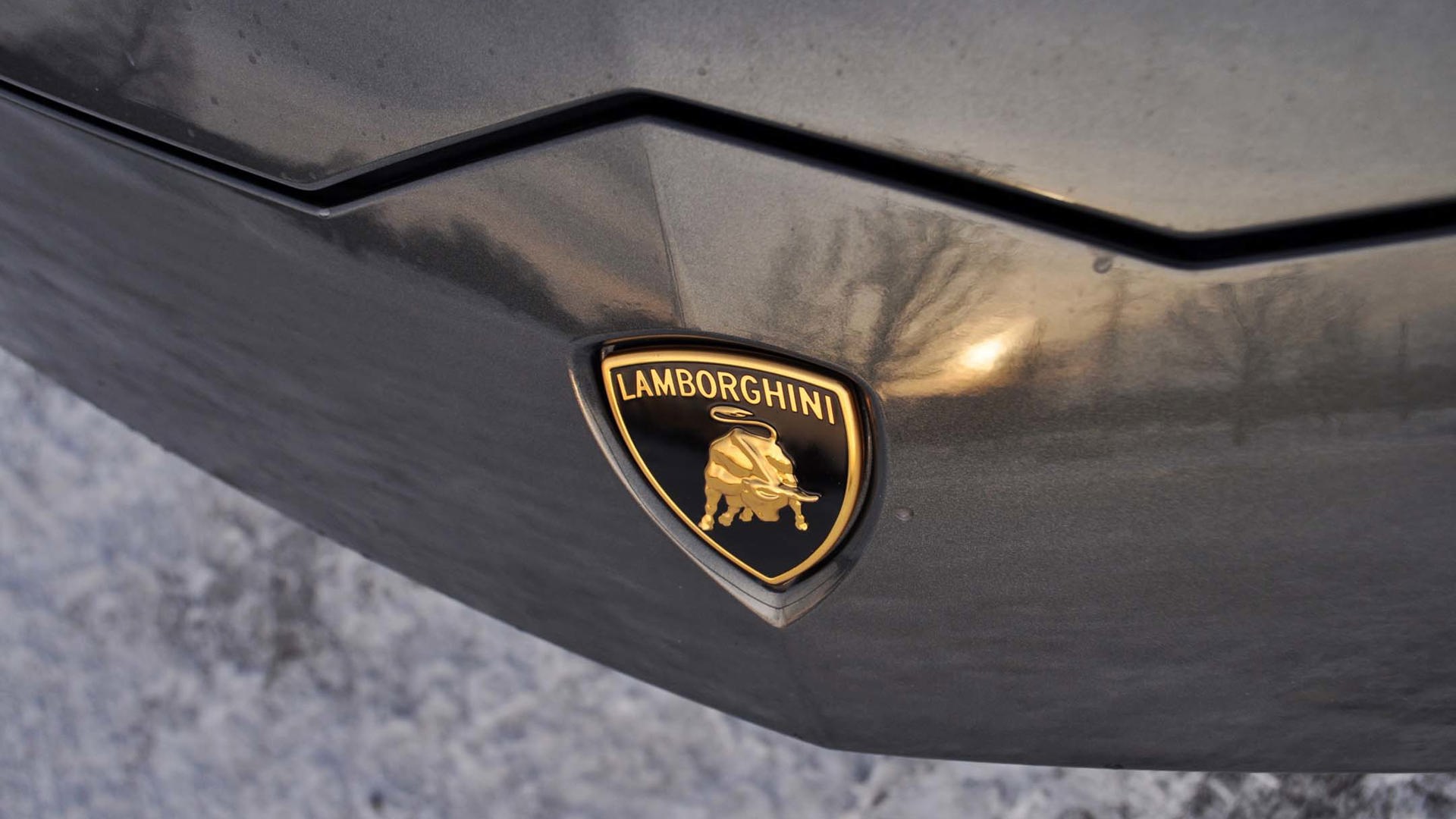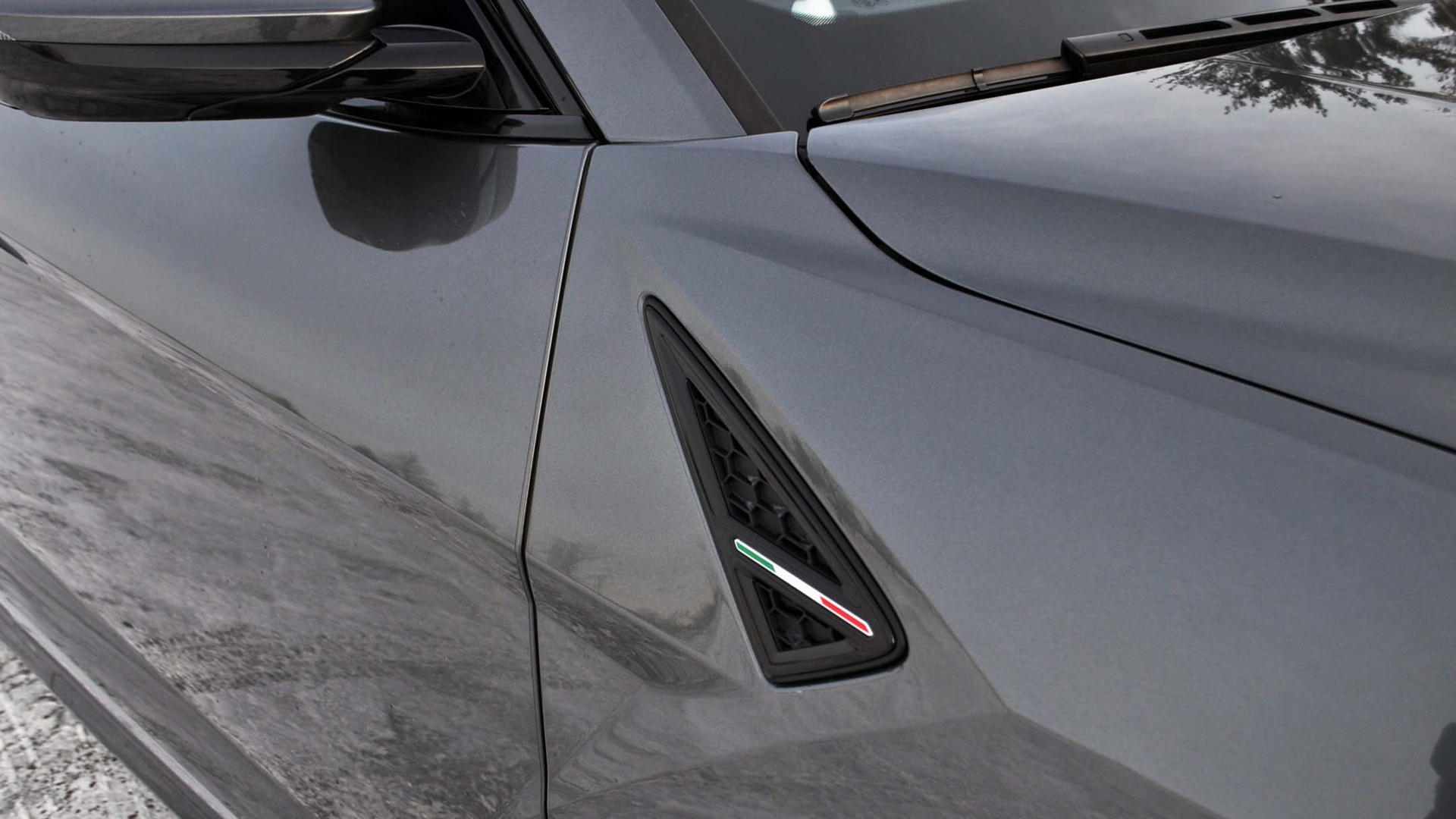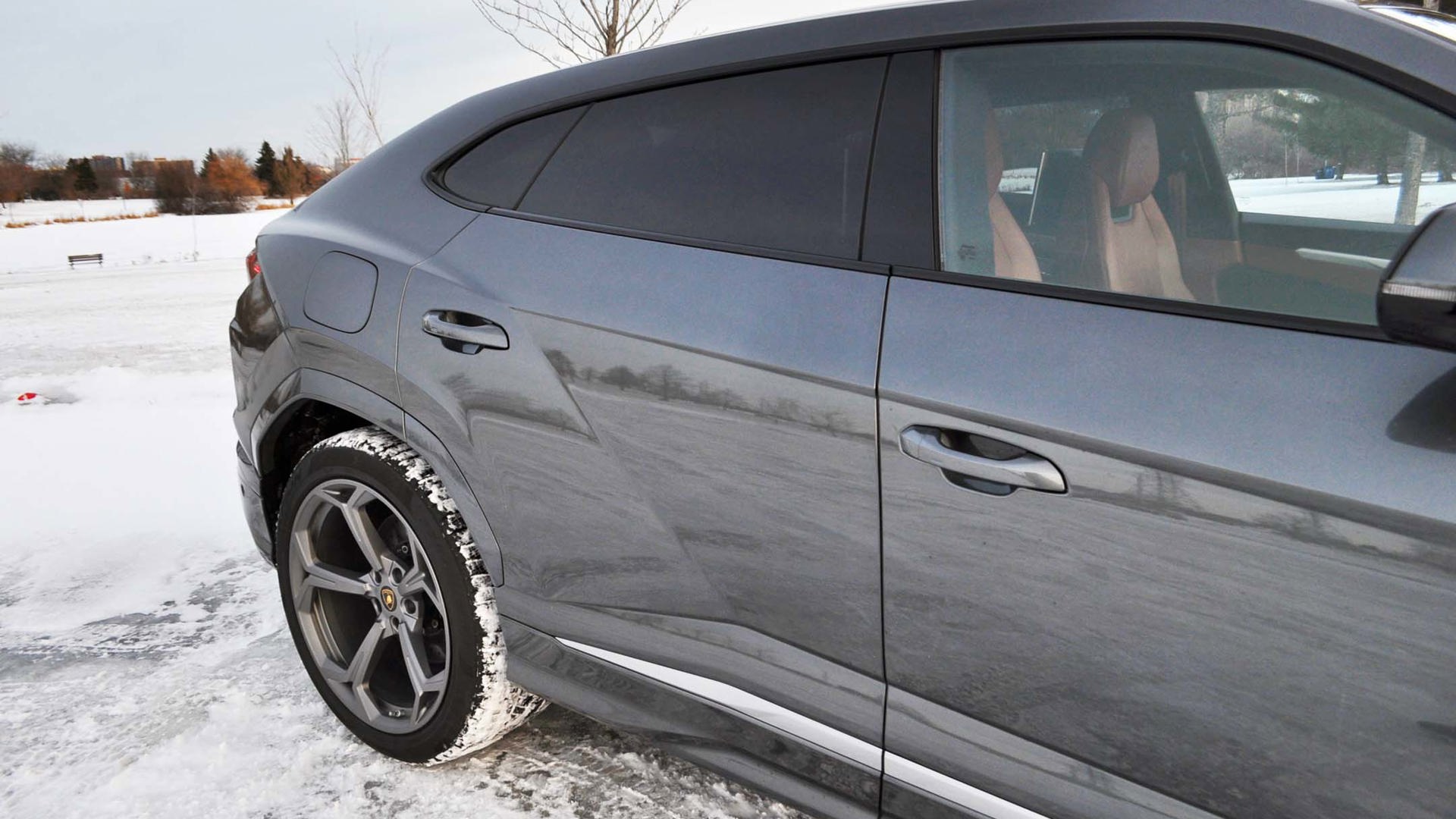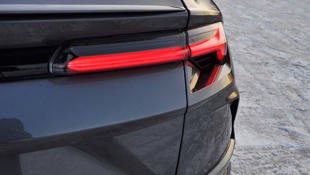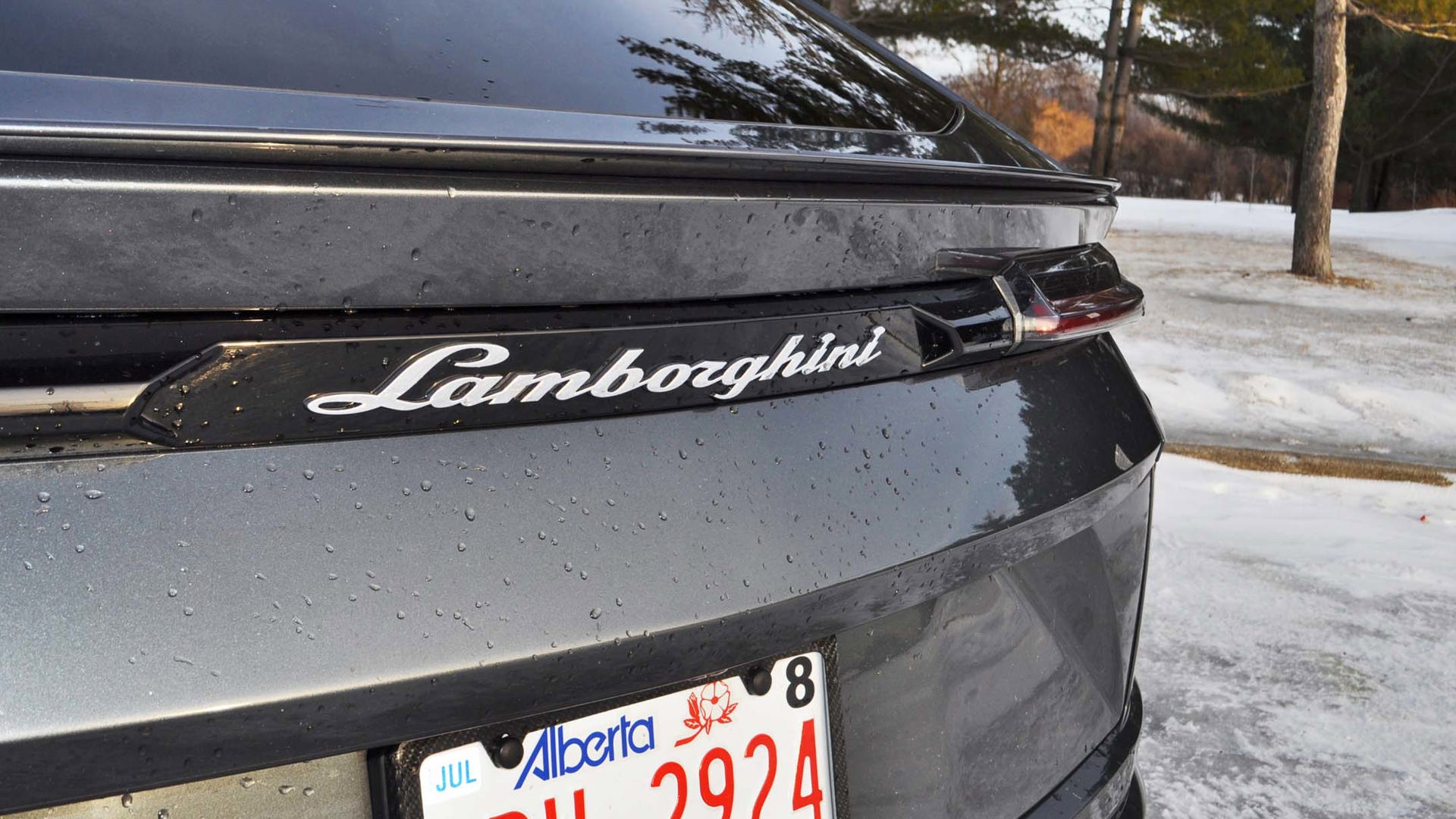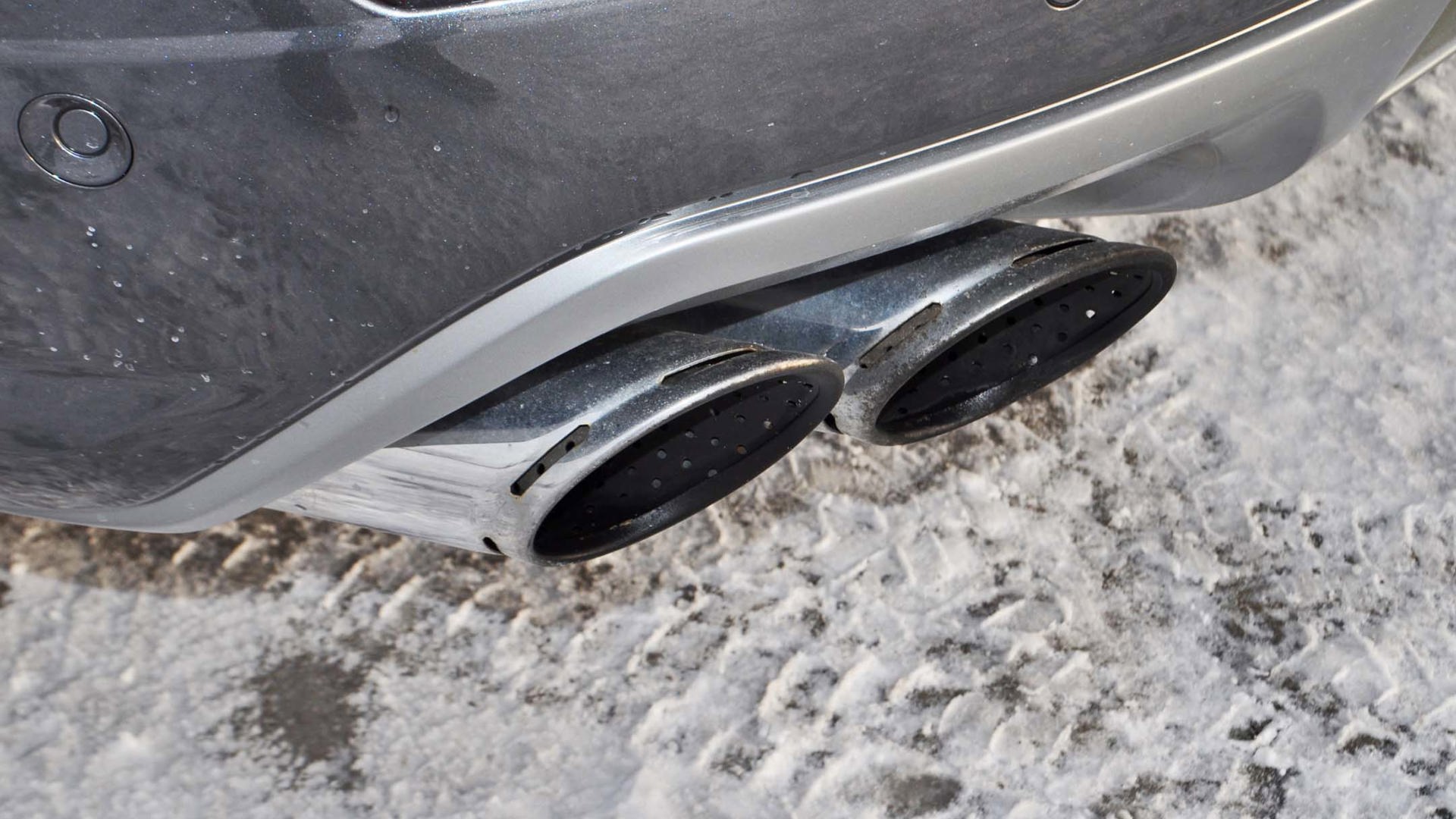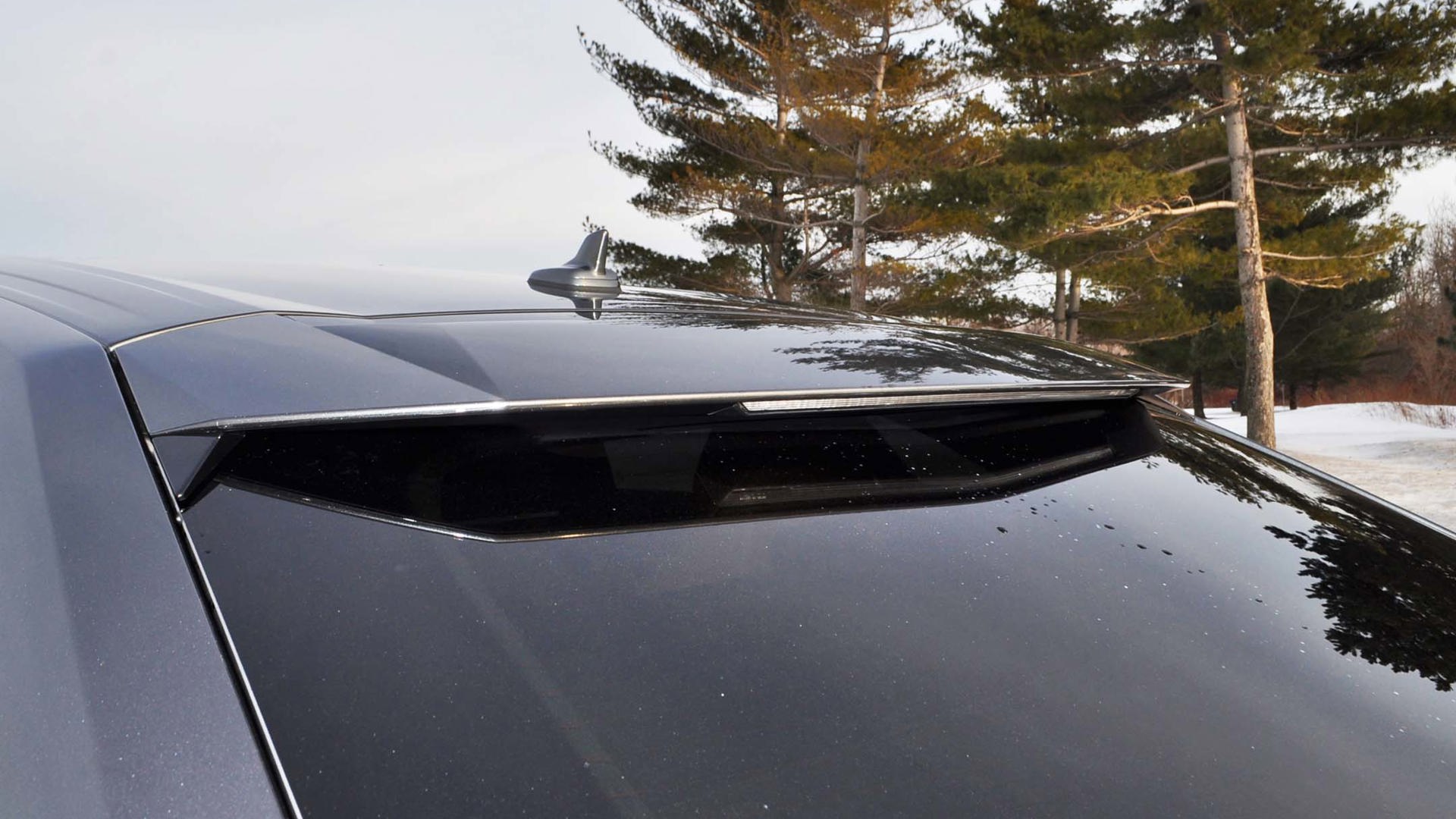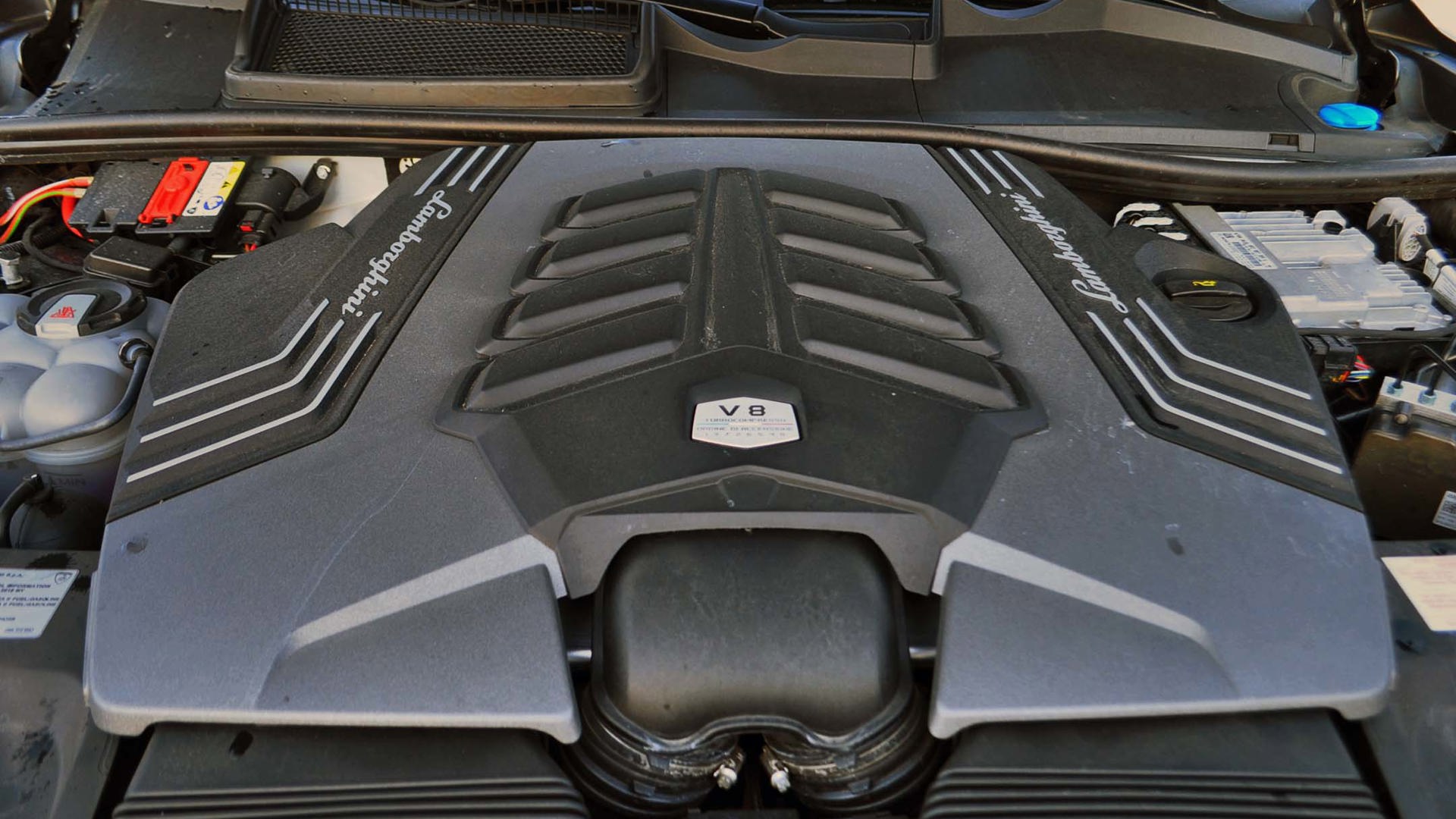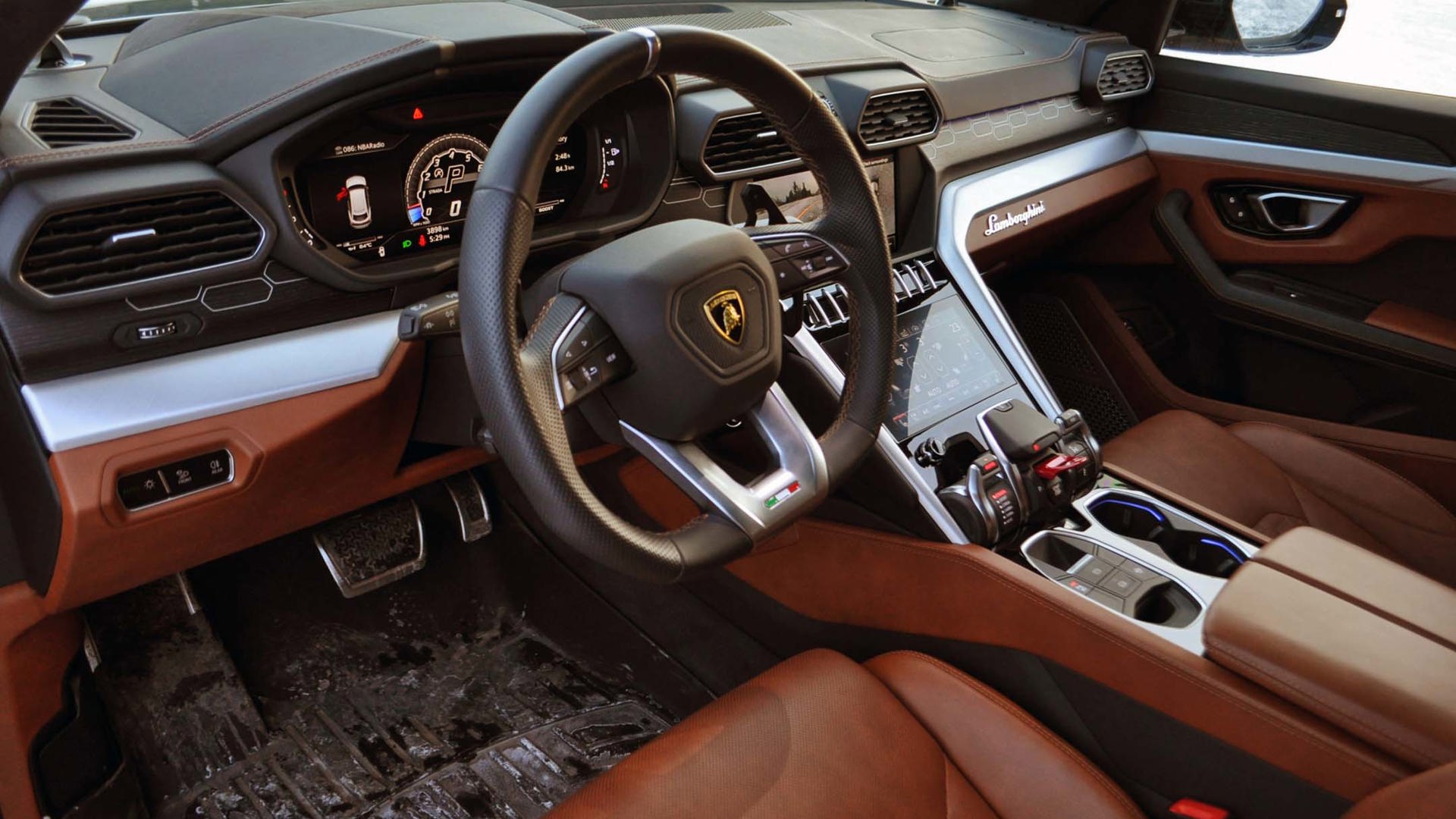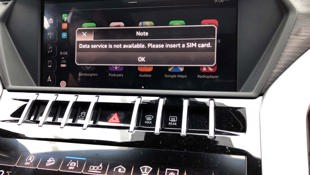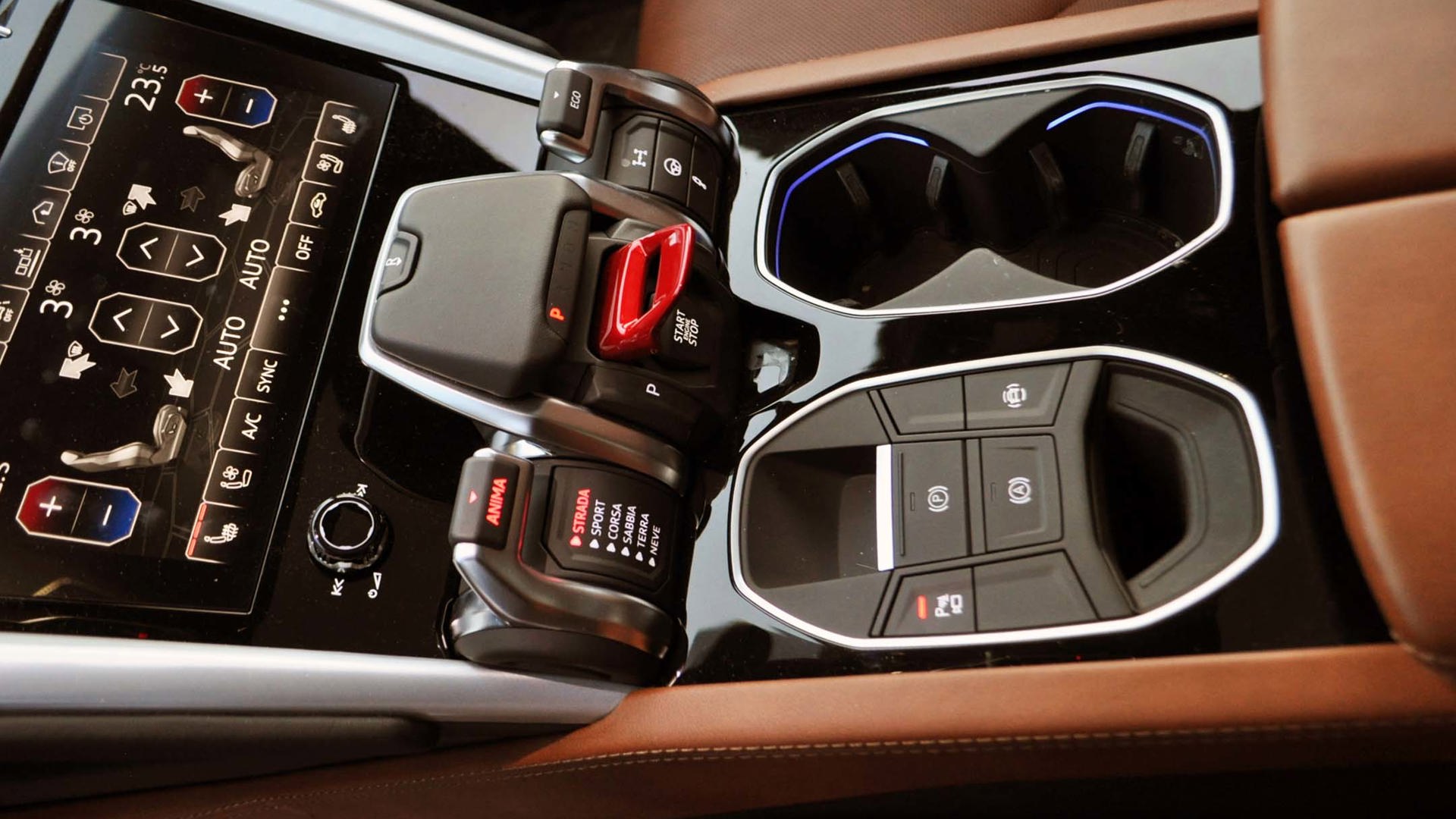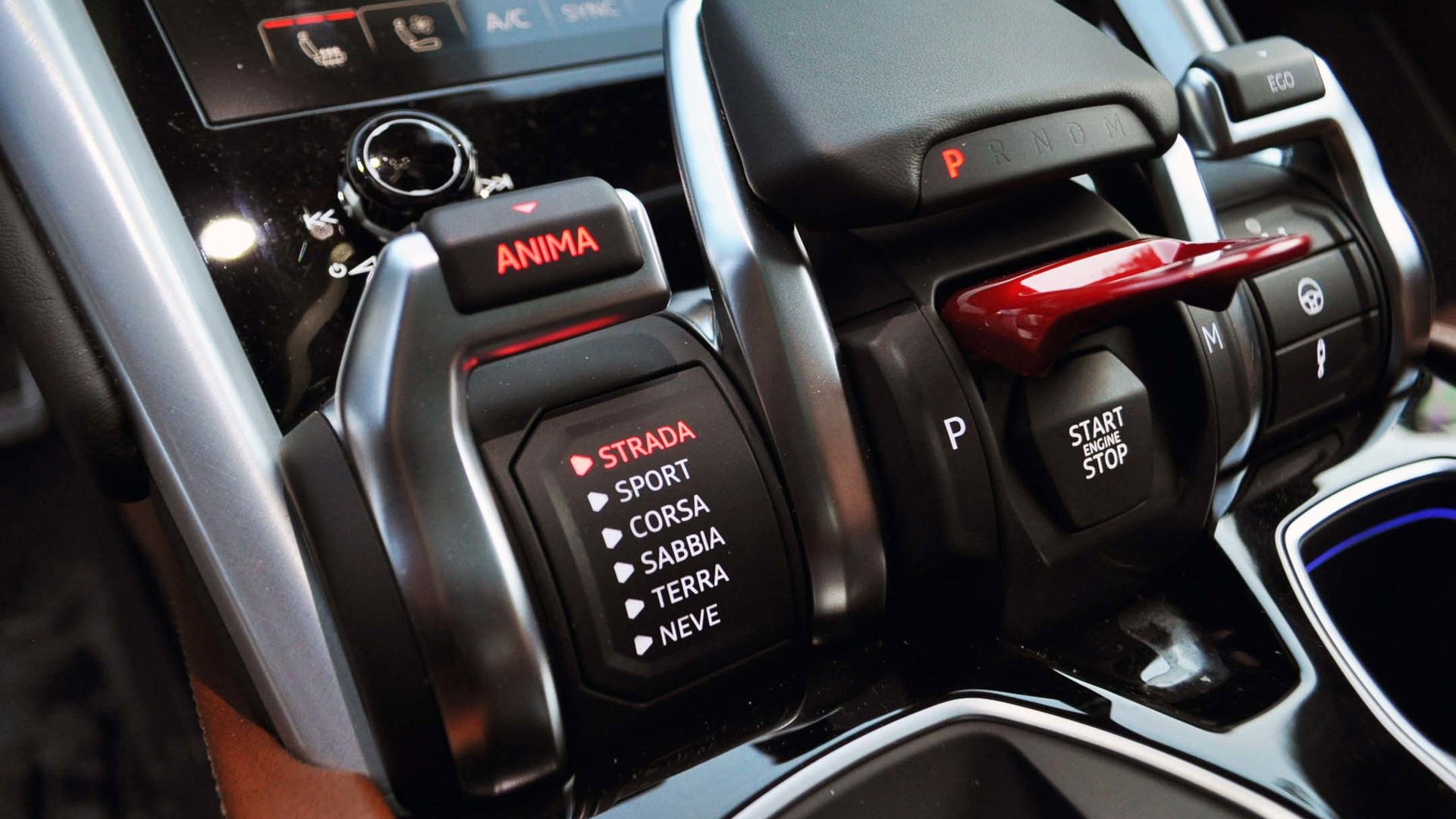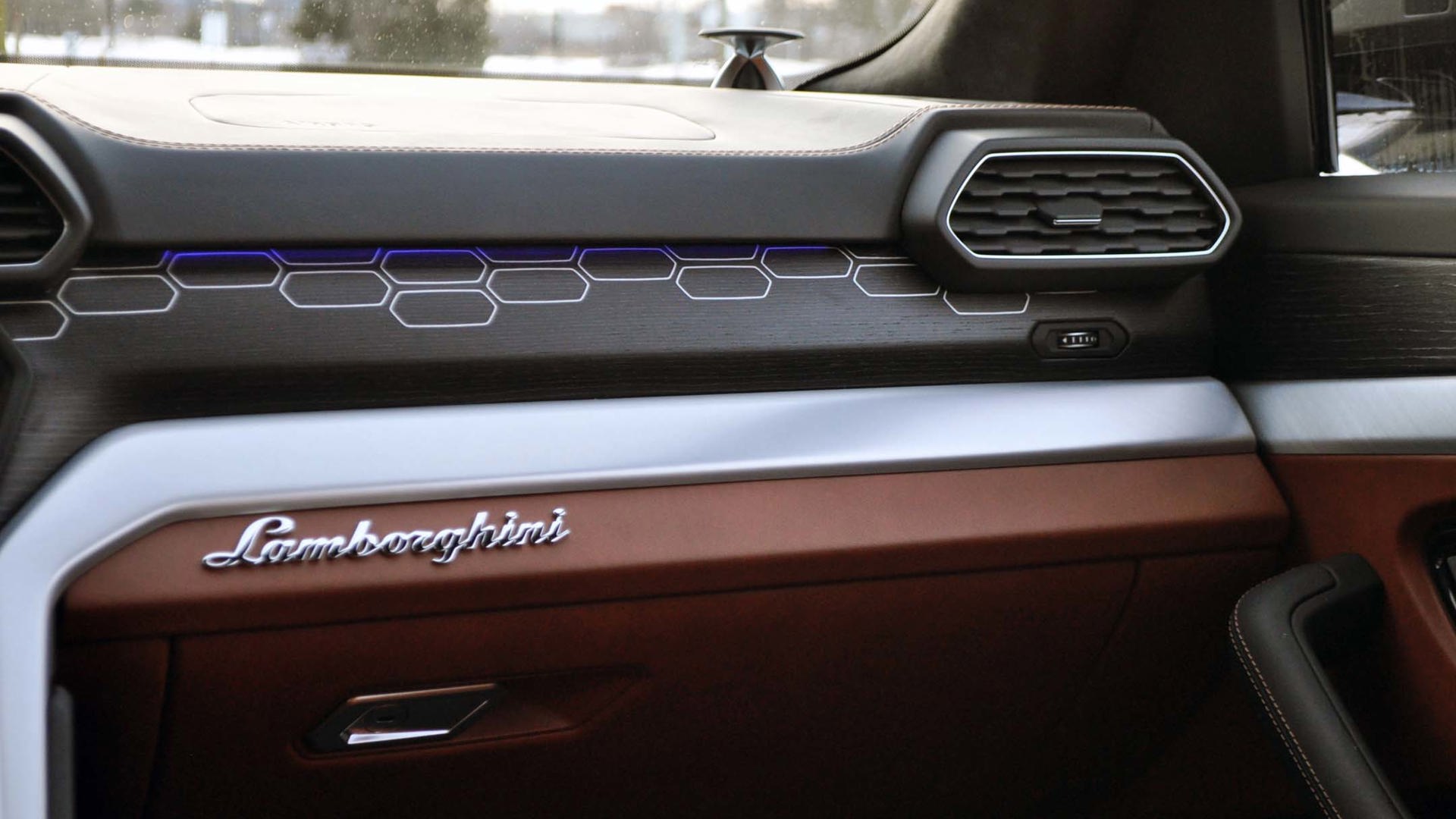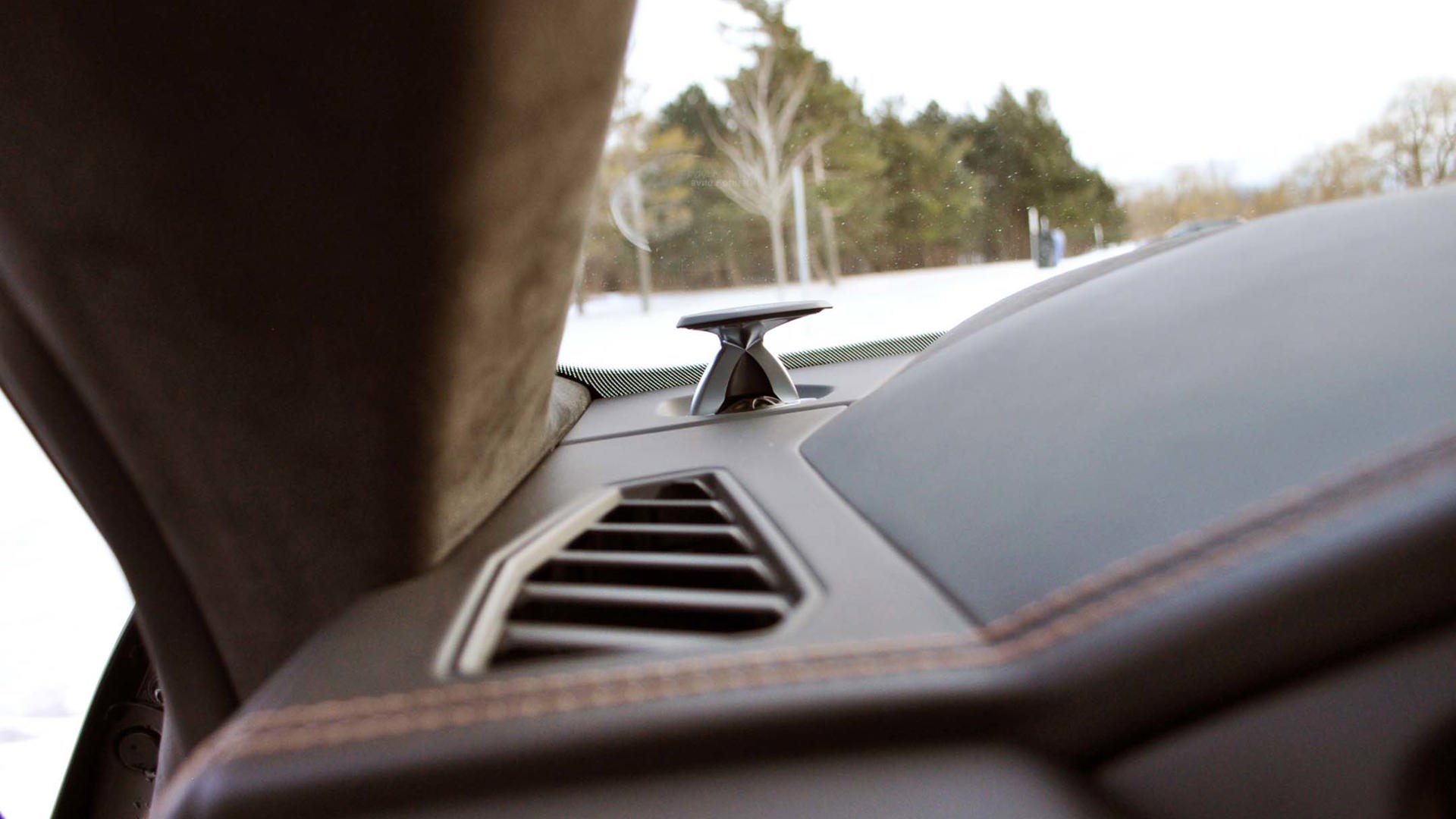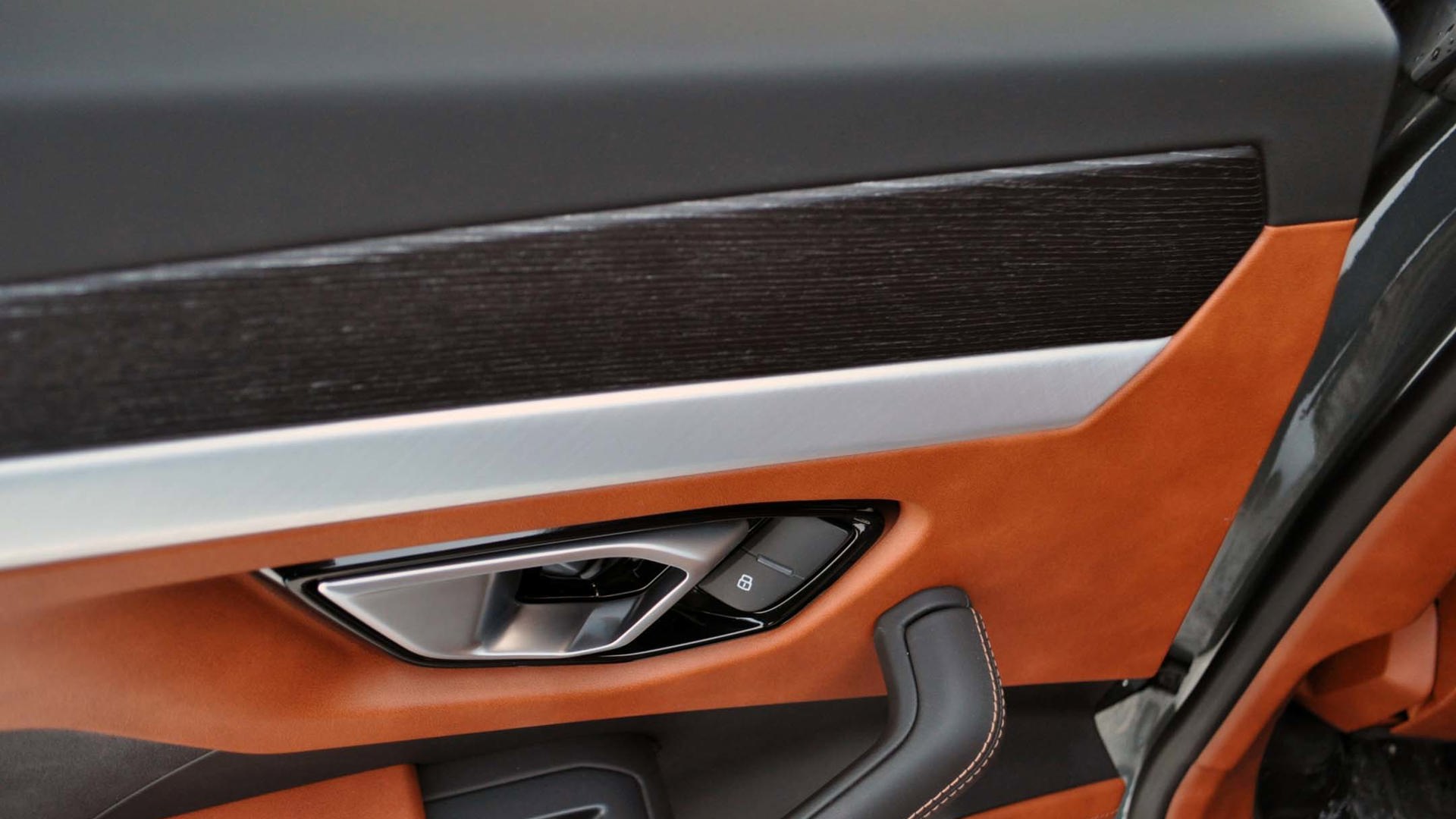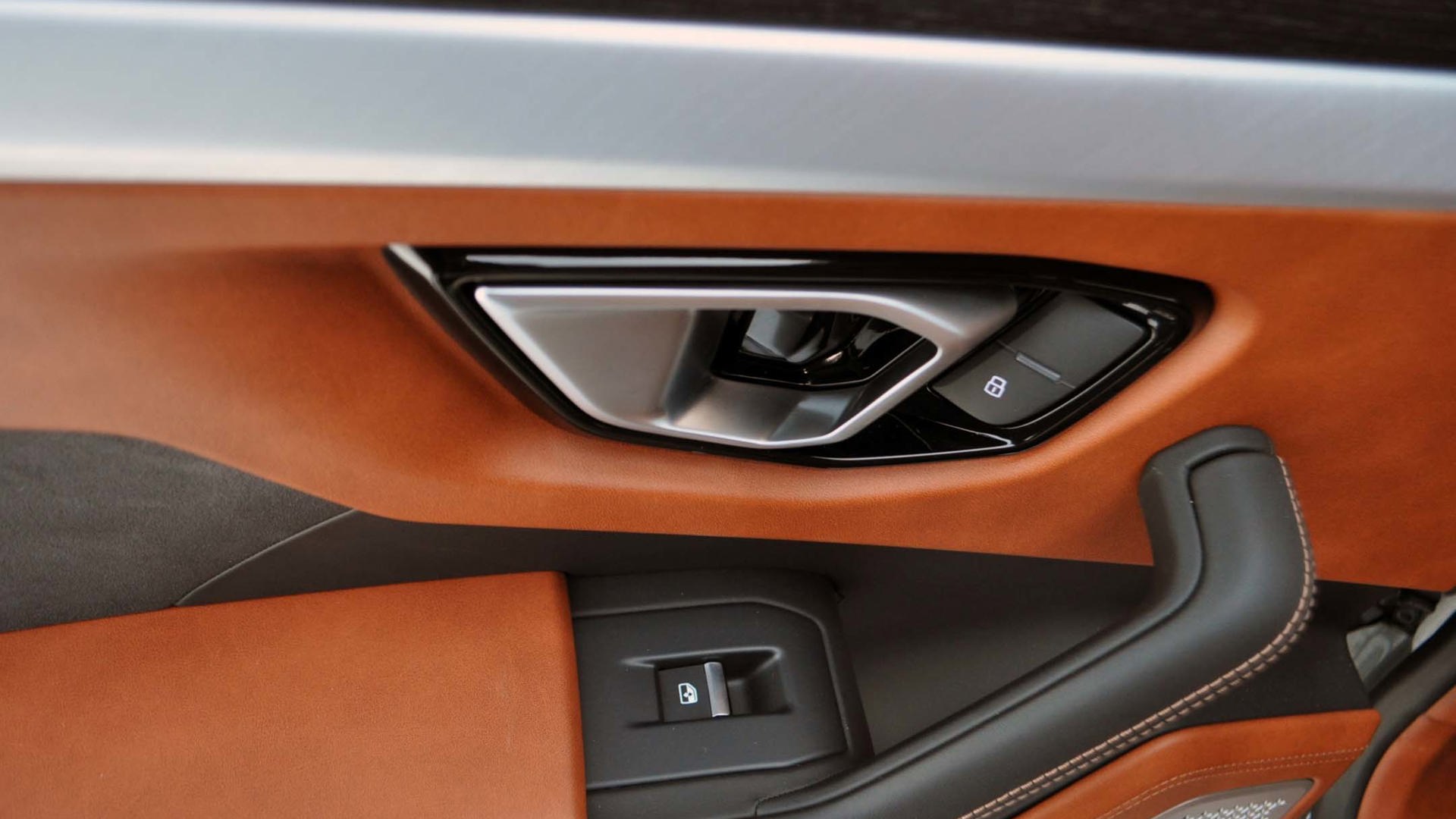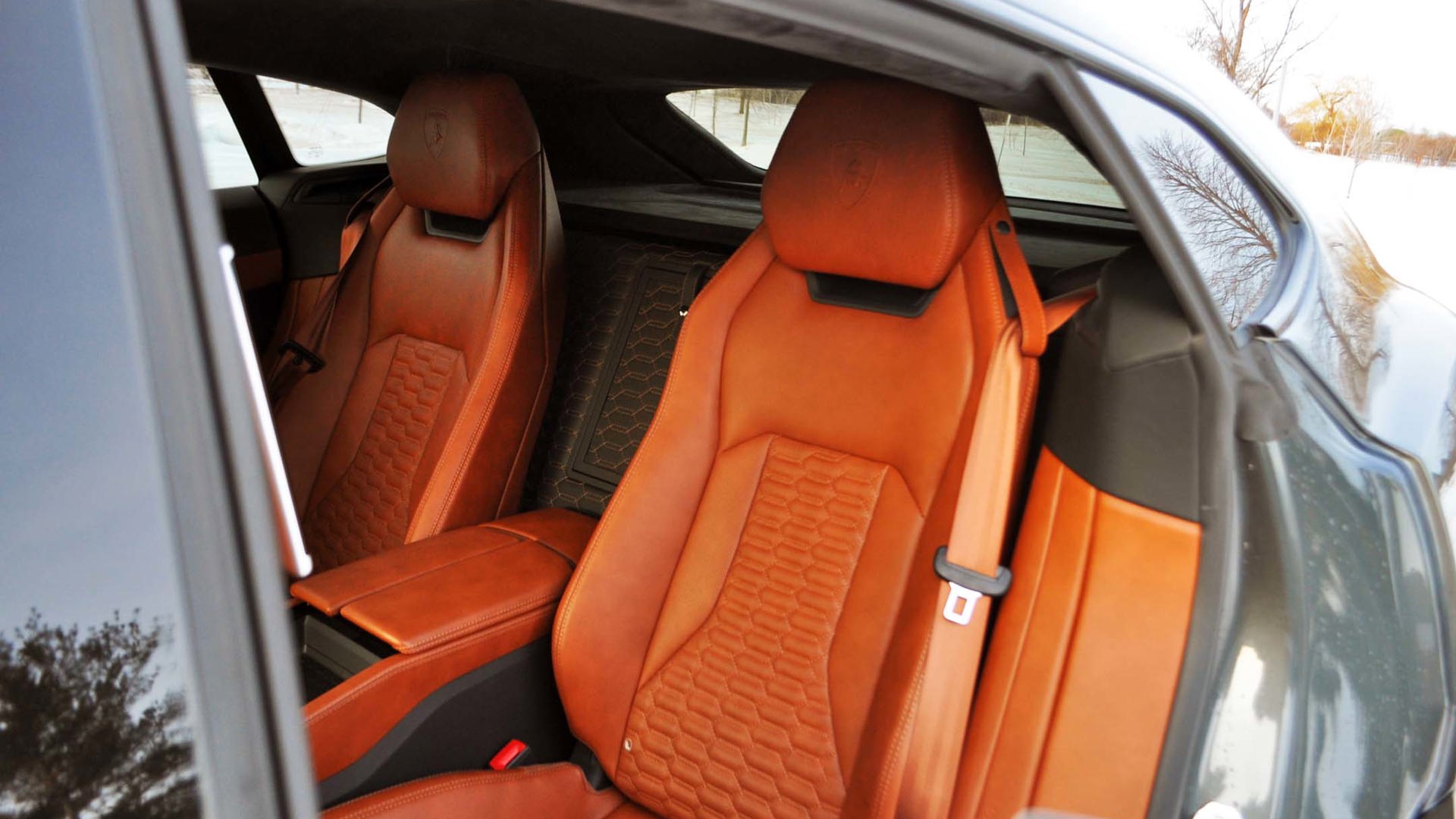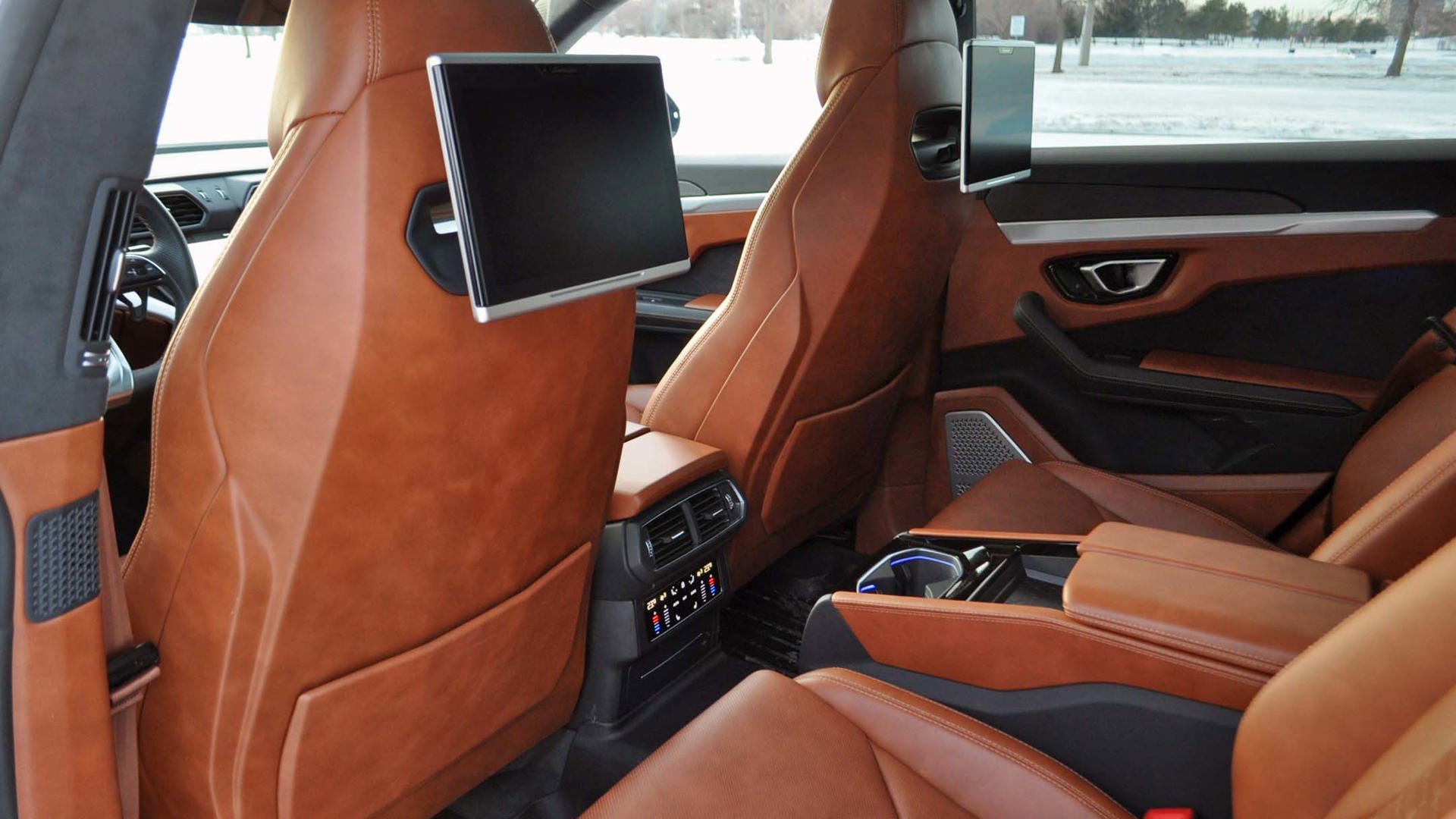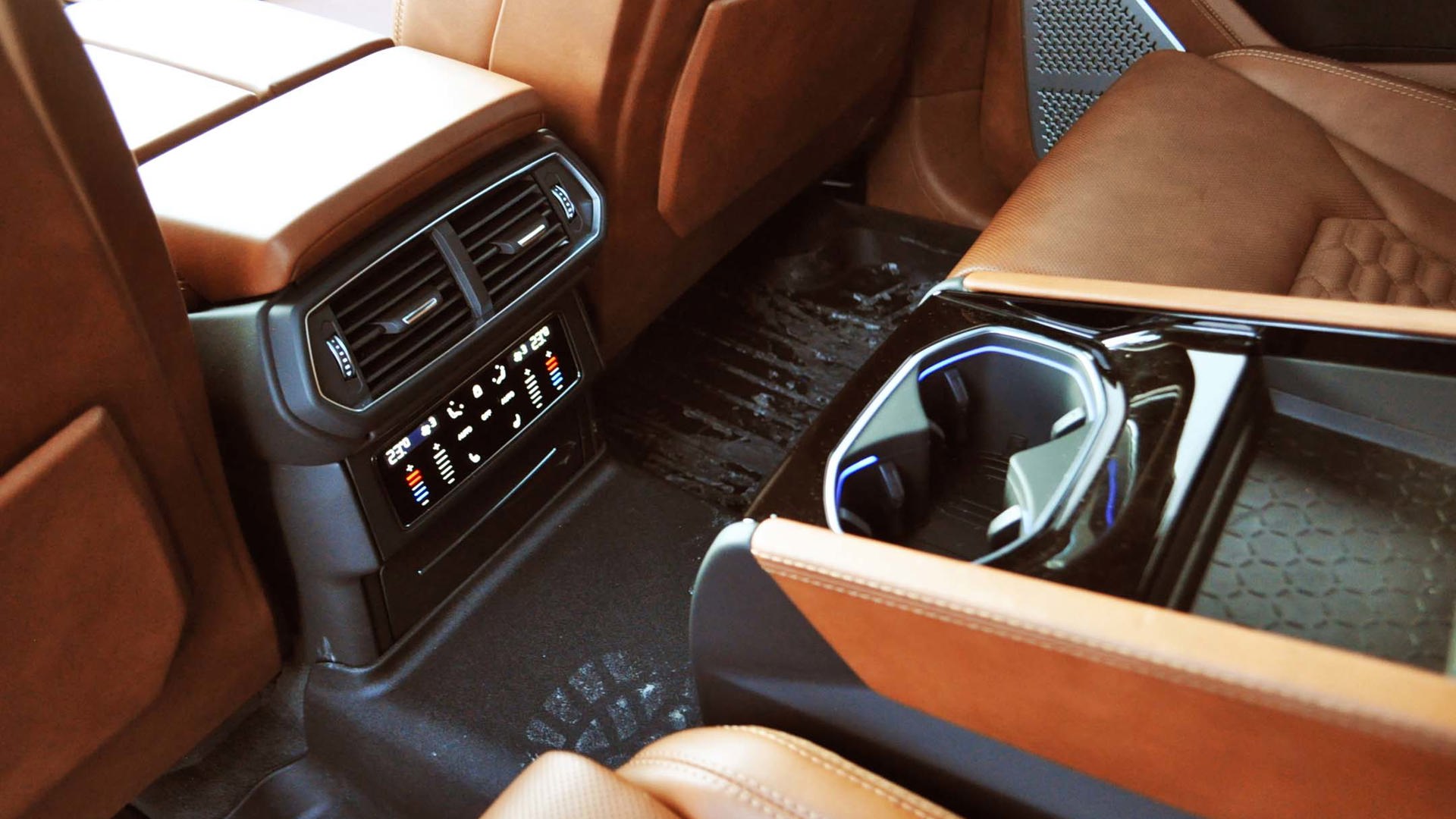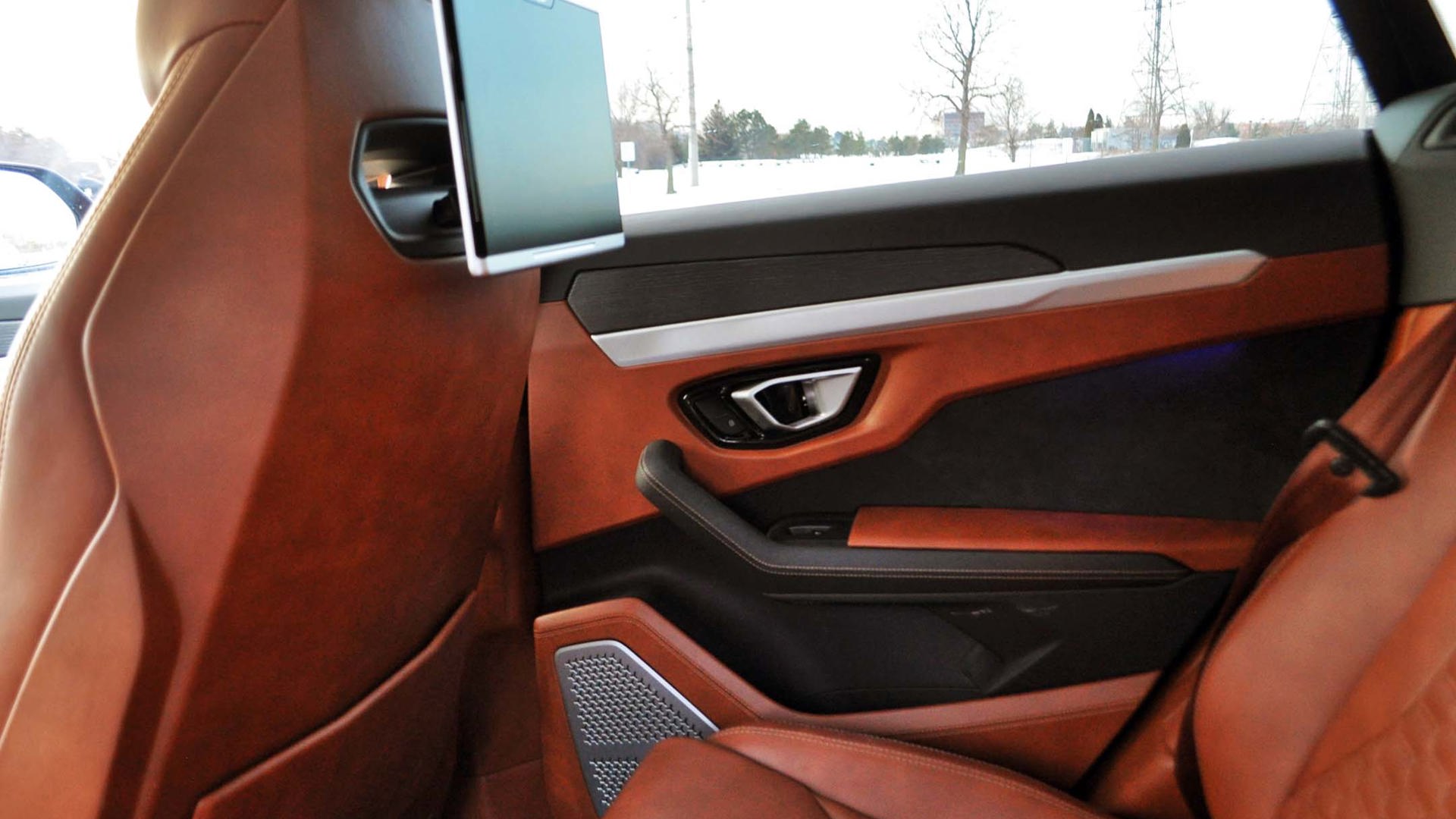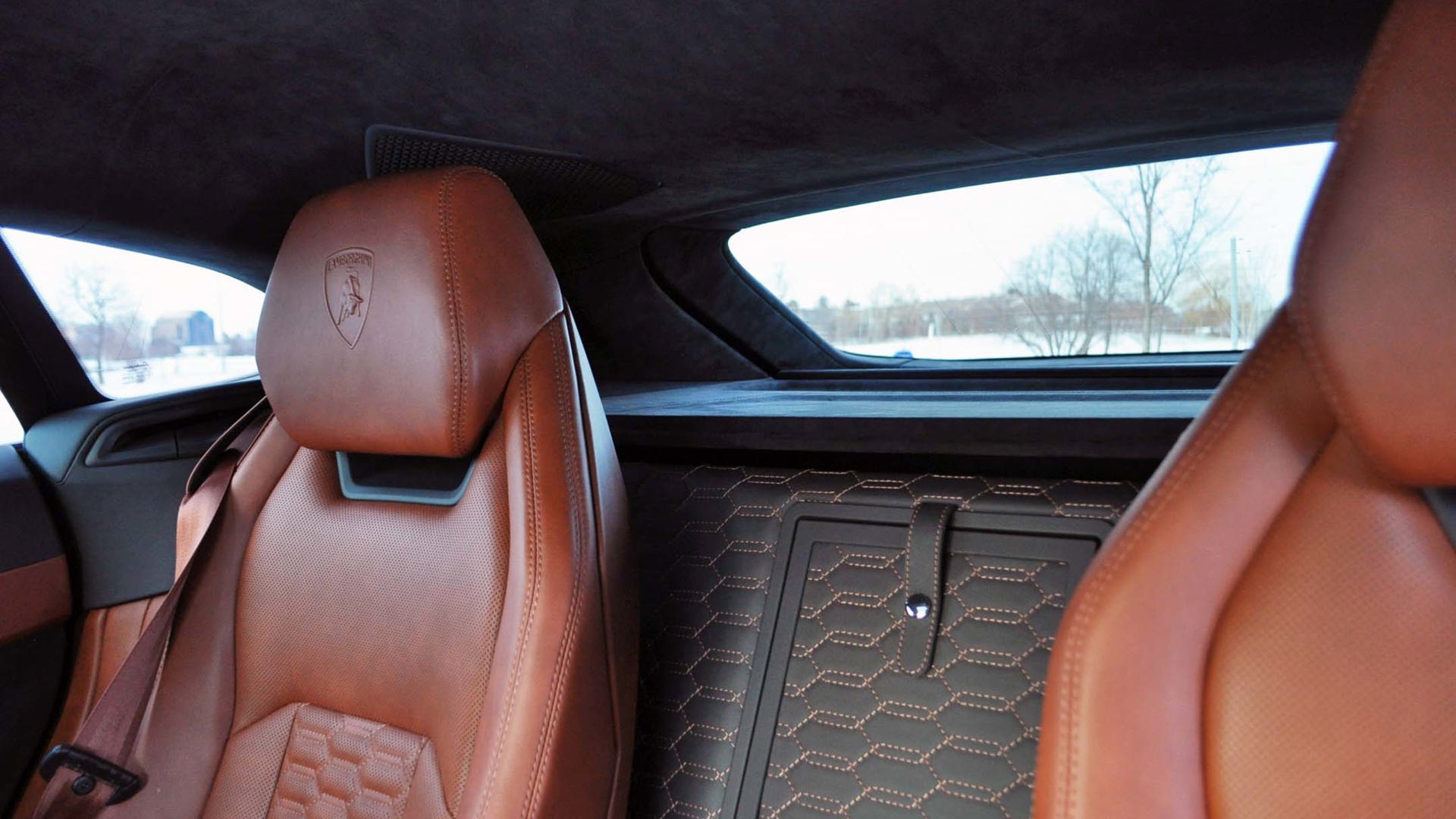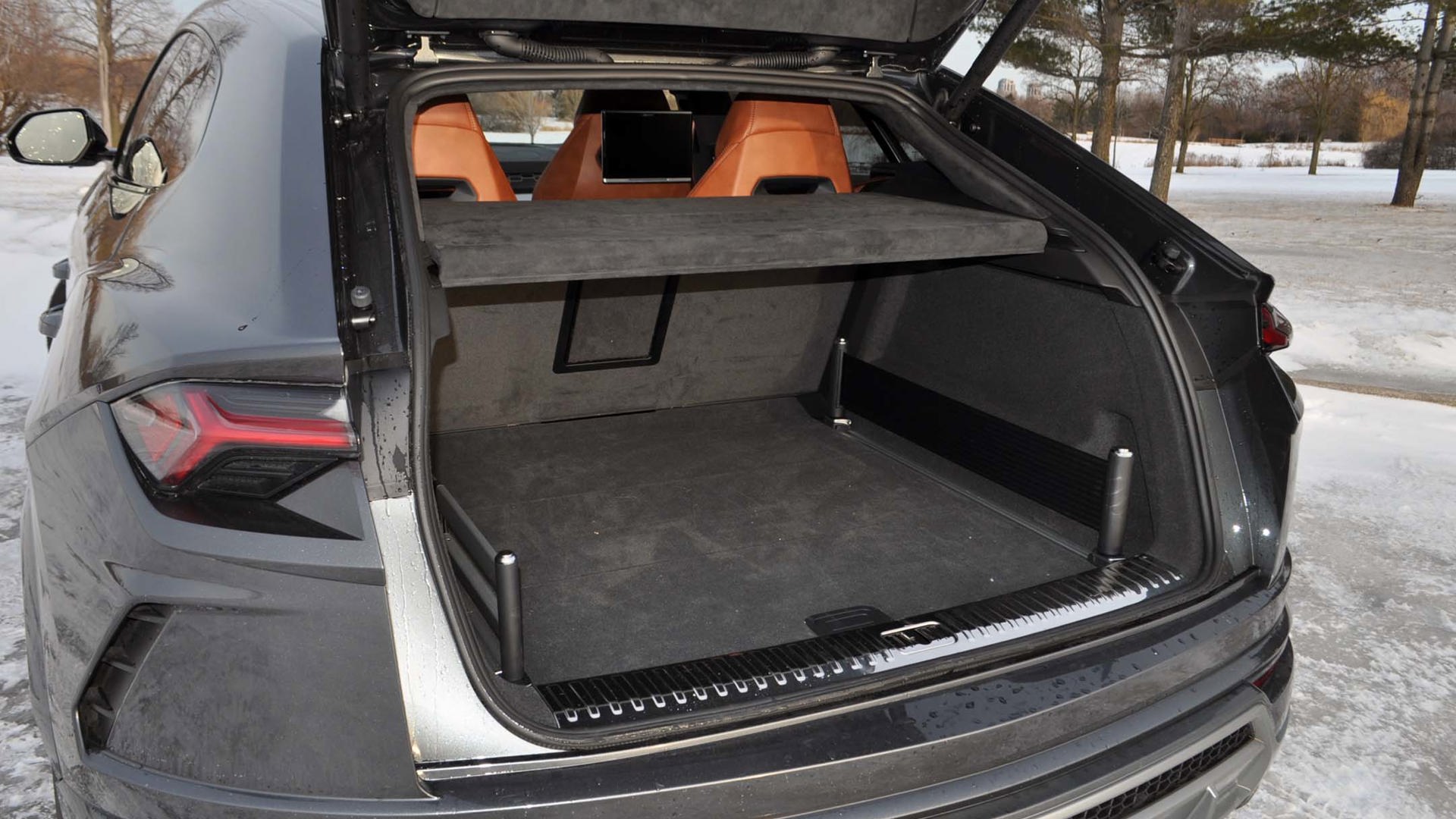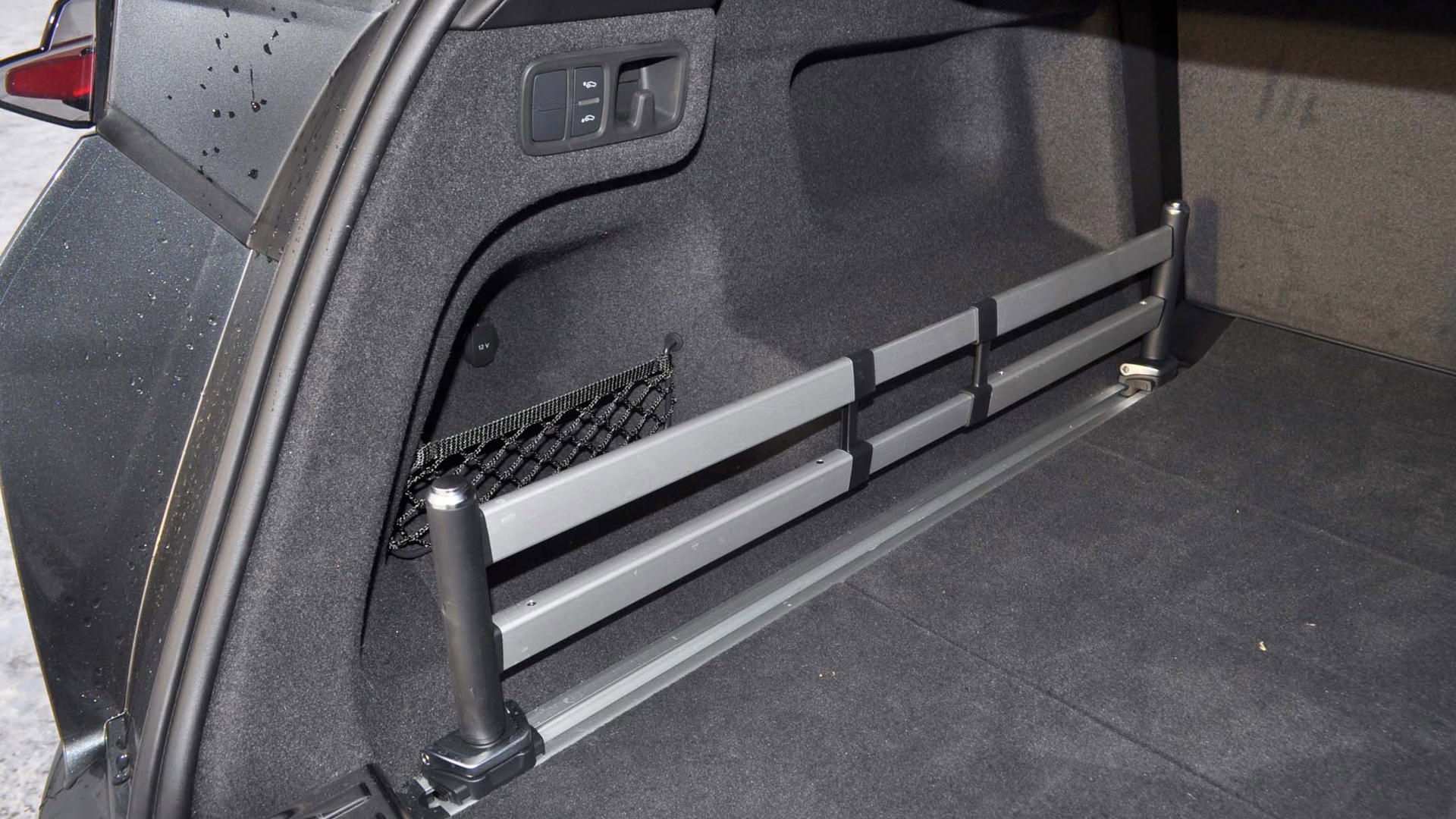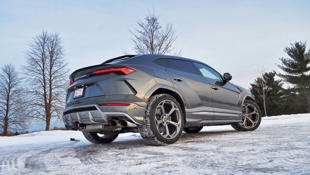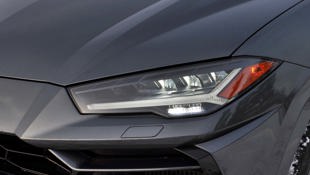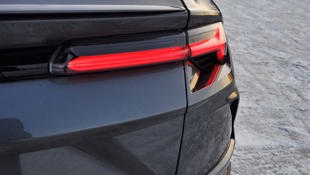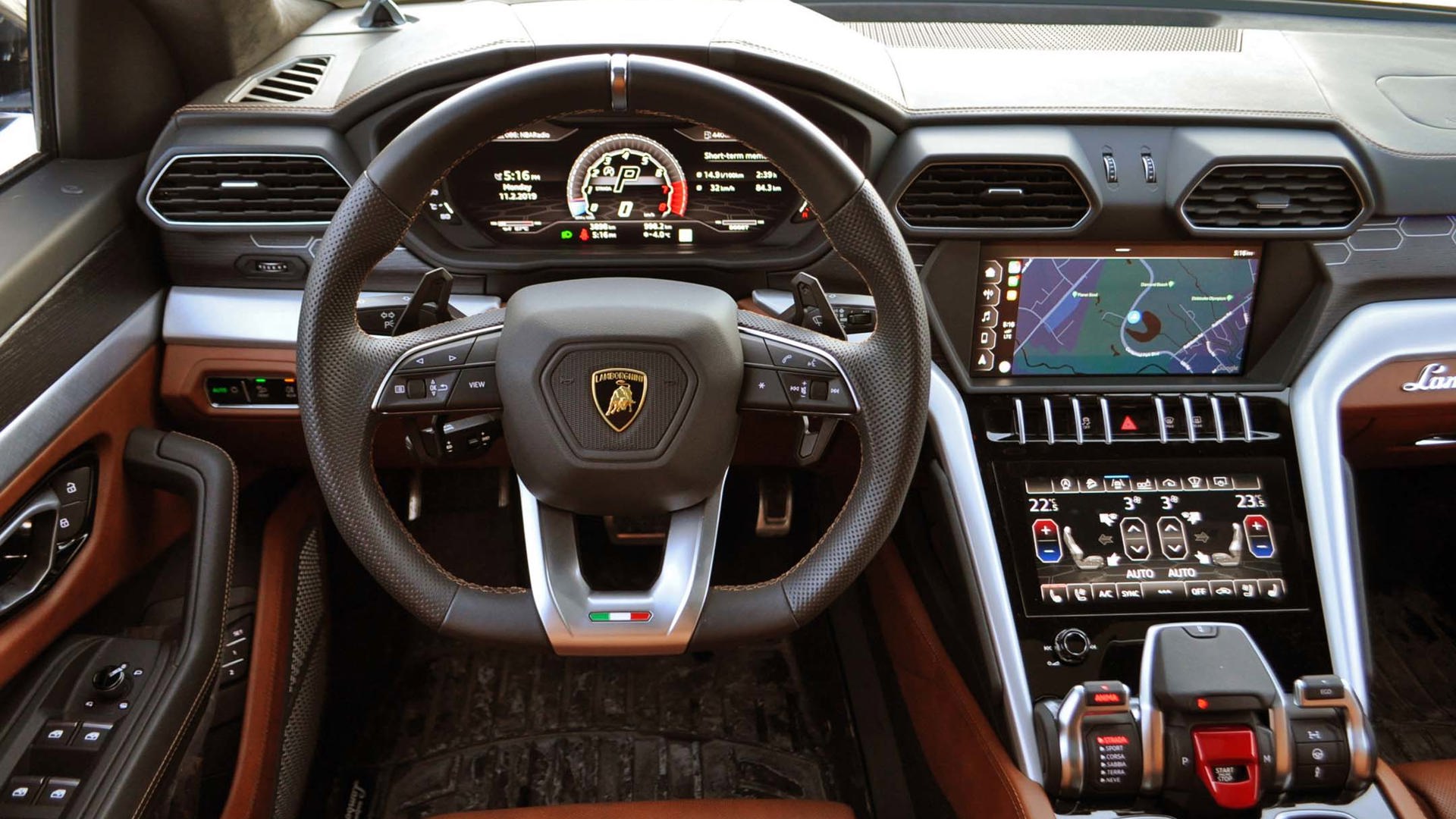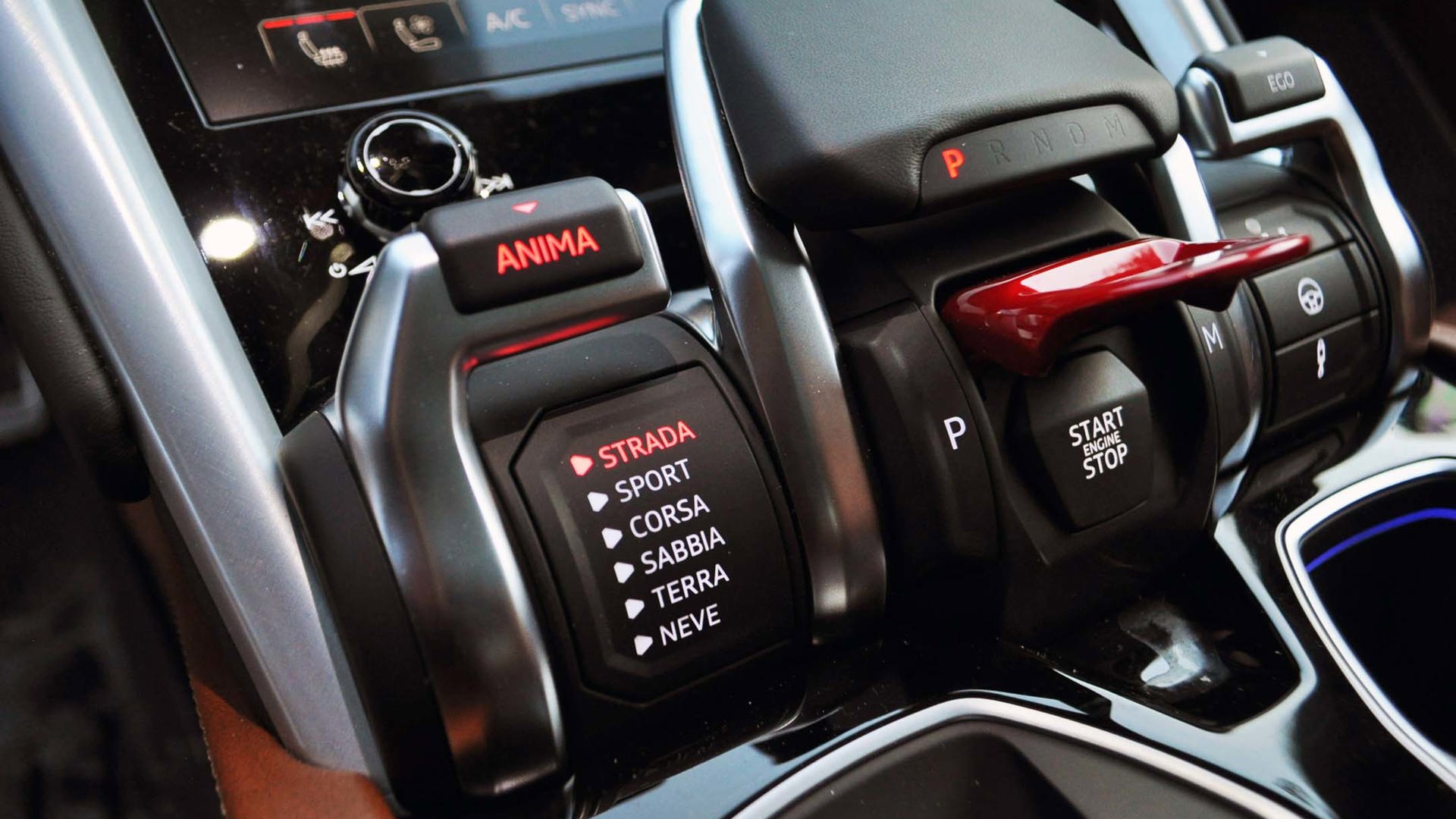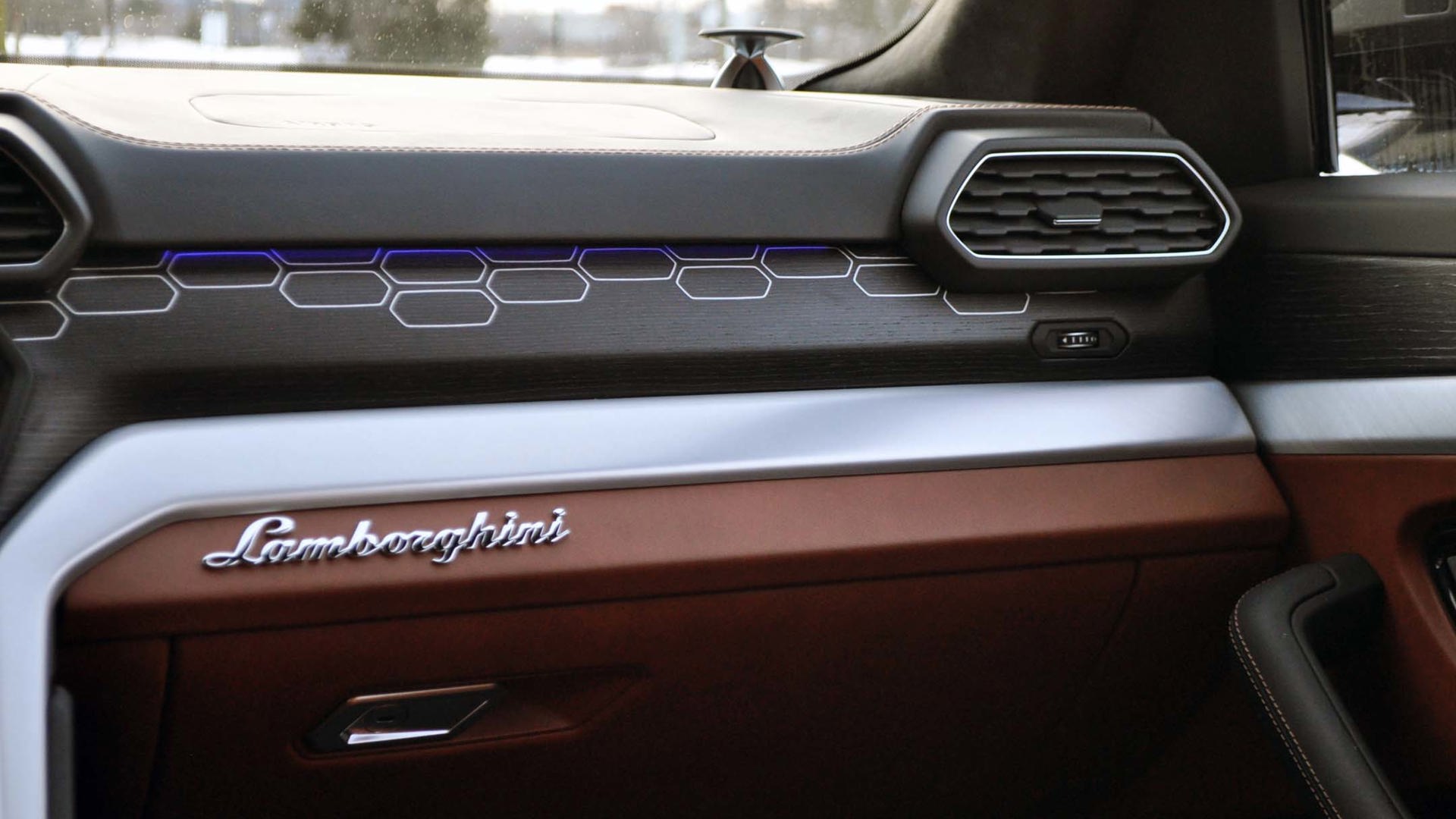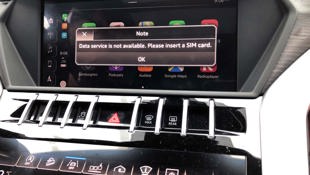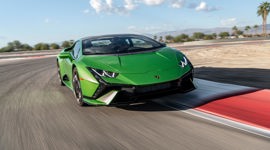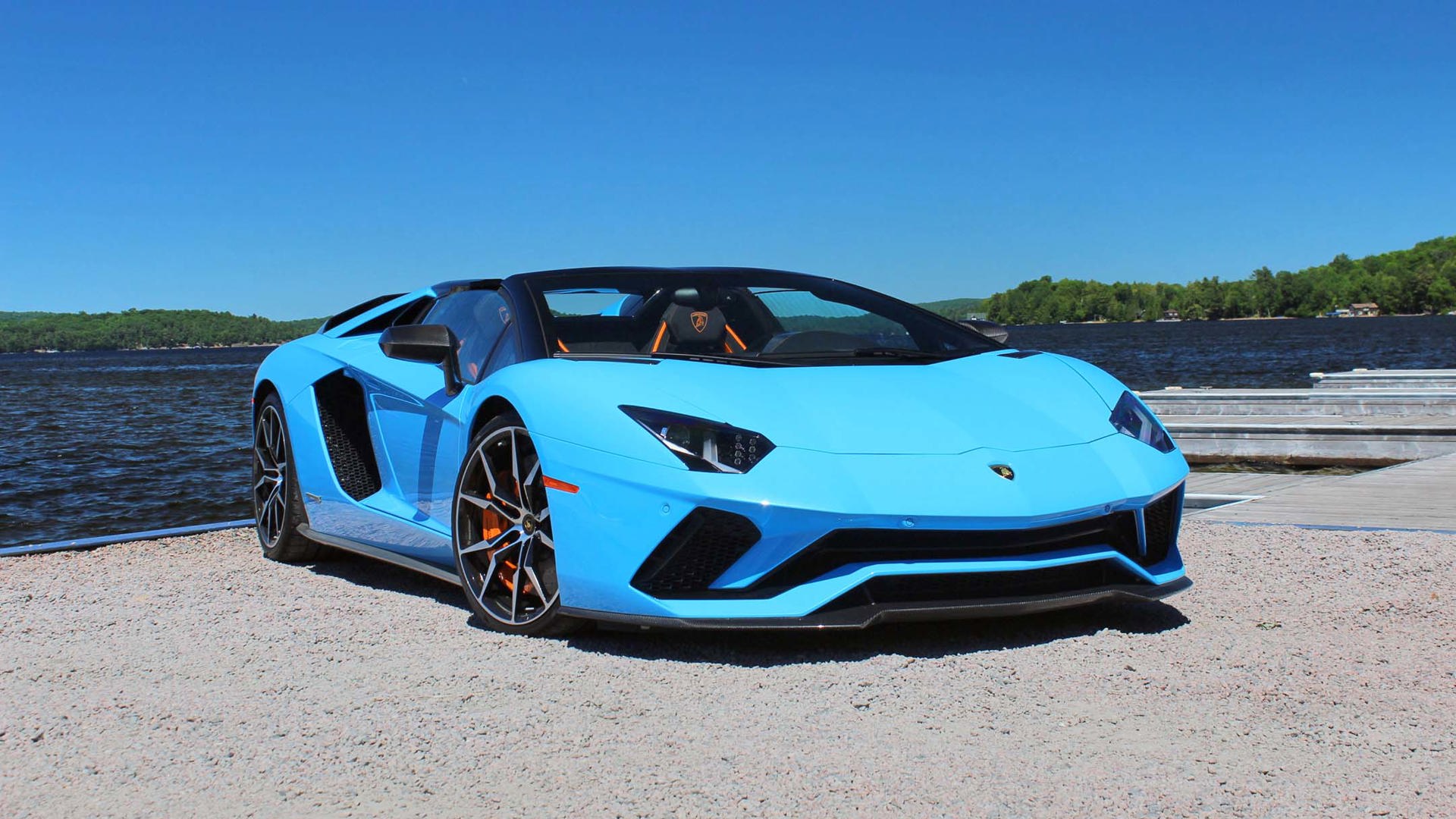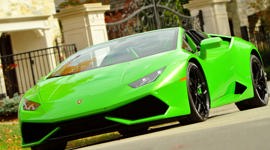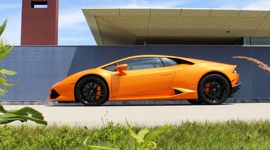 AutoTrader SCORE
AutoTrader SCORE
-
STYLING8/10
-
Safety9/10
-
PRACTICALITY8/10
-
USER-FRIENDLINESS8/10
-
FEATURES9/10
-
POWER9/10
-
COMFORT7/10
-
DRIVING FEEL9/10
-
FUEL ECONOMY6/10
-
VALUE8/10
As the wind whipped the falling and fallen snow sideways, the polar vortex pounding the windows with yet another mid-February storm, I looked around our office to see half the usually occupied seats empty. Folks were either snowed in or mercifully working from home to avoid the latest blast of Canadian winter and the havoc to wreaks on the roads.
What better time to test drive Lamborghini's new SUV?
Lamborghini, like corporate cousin Porsche before it, is on the cusp of transforming from a sports car company to an SUV company – at least in terms of vehicle sales, if not public perception
While there may be a handful of hardcore Lamborghini drivers in Canada that subject their low-slung exotic sports cars to harsh winter weather, clearly there hasn’t been a Lamborghini that could realistically be driven year round in most parts of this country since the death of the Italian exotic car company’s first production SUV, the Lamborghini LM002.
That “Rambo Lambo,” as it was dubbed in classic ‘80s movie deference, went out of production in 1993, registering a mere 328 sales in 10 years, despite its mighty 12 cylinder engine, four doors, and impressive performance, especially off-road.
But times and super SUV approaches and appetites have shifted, clearly, and this vehicle marks a turning point in the history of the firm. Lamborghini, like corporate cousin Porsche before it, is on the cusp of transforming from a sports car company to an SUV company – at least in terms of vehicle sales, if not public perception.
But this time, Lamborghini is targeting heroic on-road performance with this here 2019 Urus, available in any weather, as well as off-road ability. And the look now is more raised on-road Lambo than off-road rock crusher.
Lambo look translates in person
This Urus’ subtle Grigio Lynx paint made it look less alien jelly bean than the more traditionally screaming yellow often seen at Lambo auto show stands. Perhaps that helps explain why I found the Urus looks much better in person than I expected. Or perhaps it was extra squinting in all that blowing snow that hit southern Ontario in the three days I had with it. Or maybe both.
The front beak is still especially aggressive, but up close to it, you really get a sense of the wider rear fenders and the sloping roof line making a statement to its performance potential. If there’s any SUV that could truly be called a four-door coupe, then this is it.
That sloping rear roof doesn’t do much for rear seat headroom, but in a Lamborghini, any backseat room somehow feels like a bonus.
Exquisite interior, mostly
Open up any of the four doors, and you’re greeted by an image of the raging bull logo, eliciting oohs and ahhs from every excited person who requested a closer look – and there were many. These logo puddle lights are not unusual on luxury SUVs, but having them on every door is rare, and adds a special element even before climbing aboard.
The interior itself of this car is a work of art, from the brown baseball glove-like leather seats to the brown accent stitching along the door panels, to the Alcantara headliner and dash coverings. That smooth felt-like Alcantara flows all the way back to the rear cargo area, with brown stitching to match the seats up along the dash and in the flat bottom steering wheel.
Unlike in most SUVs, that race car-derived steering wheel does not feel like laughably pretentious gimmick.
One of the most amazing things about this interior is the performance of the Bang & Olufsen 3D sounsd system. To test out sound systems, I often crank it to max volume, or to where it gets painfully distorted, whichever comes first. I thought I had hit its max, only to look down and see I was only half way up the volume potential. Even at full auditory assault mode, there’s still little to no distortion – and at which point you can drown out even your own loudest karaoke/yelling.
High performance, in many forms
Clearly with the Urus, performance comes in many forms. But the least surprising is its on-road dynamic prowess. With 641 hp on tap (650 in Euro PS ratings) and 627 lb-ft of torque from the twin turbocharged V8, this is one of the fastest accelerating SUVs on the planet, and the highest top speed, at 305 km/h.
Its 0-100 km/h time of 3.6 seconds will shame many serious six-figure sports cars, with significantly more power than the 2019 Porsche Cayenne Turbo that share basic ingredients of the twin turbo 4 L V8 under the hood. But the Urus engine is officially rated at 100 hp more than its Cayenne corporate cousin, even with the same displacement.
Interestingly, the Urus starts at C$232,000, or just under $100,000 more than that 541 hp Cayenne Turbo. At that price, it’s still a little bit nerve-wracking driving around a vehicle this expensive in blizzard conditions. But once you get over driving around what could be a very nice condo, you actually feel like it’s almost more fun in deep snow conditions than dry pavement, because it’s easy to get the tail kicking out playfully.
That’s especially true in Sport or Corsa mode, where the stability control system doesn’t kick in nearly as quickly, and adjusts the air suspension and four-wheel steering system for increasingly flat and responsive handling. But when conditions were truly treacherous, the Urus also has a snow mode (called Neve on the futuristic Anima mode selector), which provides a very reassuring and planted feel, starting out in second gear and trading frisky acceleration for planted confidence.
If you plan to off-road your Lambo, which seems even more crazy, there are also different Sabbia (sand) and Terra (dirt) settings. Plus there’s a way to individualize each setting so that the all-wheel-drive system, steering and suspension can all be adjusted to your preference. The toggle responsible is labeled Ego, located right next to the signature Lamborghini red rocket launcher switch, which covers the Start/Stop button.
Even in serious winter conditions the radar cruise control kept a safe distance to the vehicle ahead, slowing down and accelerating safely, which could come in very handy in low visibility conditions. Although it’s not something you’d want to give up control over completely. If the sensor can’t read things ahead it will let you know. Approaching the car in front of you quickly, a warning will light up in the digital dash saying ‘Precognition’ instead of the usual ‘Brake.’
One unusual aspect to driving the Urus is that there’s no drive button. Drive is by hitting the plus shift paddle. The plastic shift paddles are somewhat large, but seem to be made fairly cheap plastic. If there is any downgrade or any evidence of some cost-cutting that would be it.
This shift paddle Drive also makes it more difficult when you’re parking and reversing the vehicle, as it becomes confusing as to which Paddle is the plus/Drive one.
The brakes did occasionally squeak which is not surprising with those massive carbon ceramic discs. But one thing this Urus is really missing for proper wintertime operation: a rear window wiper.
Practicality, to a degree
There is Apple CarPlay, and nicely the phone doesn’t have to be connected to the car with a cord for it to function. This allows you to easily jump in and out, as well as reply to your texts and messages, all using proper voice recognition that understands better than most car systems, without having to worry about leaving a cable in your car.
There’s a $6,956 rear entertainment seat option with two massive screens basically stuck onto the rear seats. While the screen size is impressive, they jut out and are somewhat in your face considering the limited amount of leg and headroom back there.
As tested, this Urus rang up a $302,825 bill, before taxes, but seemed like a much more luxurious vehicle inside than the $200k-ish Tesla Model X P100D I tested last year, which is significantly larger and offers three rows. The Tesla can’t touch the Lambo’s top speed, but feels quicker off the line, as the Tesla SUV’s 3.1-second 0-100 km/h time suggests.
Conclusion
Overall, the Lamborghini Urus is destined to become the best-selling vehicle in the firm’s lineup, and ever. It’s going to help fund more limited production vehicles that will help keep Lambo associated with ultimate exotic sports cars, but offers Canadian driving enthusiasts an exotic option for guilt-free driving year round. No matter what the weather.
| Engine Displacement | 4.0L |
|---|---|
| Engine Cylinders | V8 |
| Peak Horsepower | 650 hp @ 6,000 rpm |
| Peak Torque | 627 lb-ft @ 2,250–4,500 rpm |
| Fuel Economy | 19.2/14.1/16.9 L/100 km cty/hwy/cmb |
| Cargo Space | 616 / 1,596 L seats down |
| Model Tested | 2019 Lamborghini Urus |
| Base Price | $232,000 |
| A/C Tax | $100 |
| Destination Fee | |
| Price as Tested | |
|
Optional Equipment
$70,825 – 23" Taigete Wheels w/Diamond Finish $7,461; CCB with Black Calipers $1,518; Electric Panoramic Roof $3,668; Privacy Glass w/Acoustic & Double Glazing $2,782; Style Package in Body Colour $2,529; Offroad Modes w/Trailer Towing Preperation $886; Trailer Towing $1,518; Bright Chrome Exhaust Tailpipes $1,138; Bicolour Elegant Interior in Leather $3,288; Contrast Stitching $886; Fully Electric, Heated Seats w/Massage & Ventilation $4,173; Q-Citura Interior in Leather $4,173; Floor Mats w/Leather Piping & Double Stitching $886; Multifinction Steering Wheel w/Perforated Leather Inserts $886; Contrast Stitching on Steering Wheel $506; 4-Seat Configuration incl. Full Electric Seats $5,059; Rear Seat Entertainment $6,956; Coloured Seat Belts in Terra Asia $1,138; Insert in Wood – Open Pore w/Aluminum Inserts $2,277; Bang & Olufsen 3D Audio System $8,347; Ambient Light Package $4,047; Night Vision $3,541; Wet-Arm Wiper, Headlight Washer & RVC Cleaner $1,138; Tailgate Handless Opener $1,138; Cargo Management System $886
|
|

